Recently, Bevi CEO, Sean Grundy, sat down with Cheddar to talk about all things water. Watch the video by clicking the link here to hear a little about Bevi’s mission to reduce office plastic waste and how this innovative startup is changing the beverage industry office-by-office!
And if you’re interested in getting Bevi for your workspace, leave us some info at bevi.co/get-a-quote/, to receive personalized pricing.
It is no secret that consumers are becoming more conscious of the long term environmental impact of their purchases. This is true for a myriad of industries including the automotive industry with people looking to replace gas and diesel engines with electric ones, as well as in our food system where people are using plant-based substitutes for meat and dairy products. All signs show that this conscious-consumerism will soon become pervasive across all markets and it’s time that the hospitality industry jump on-board. Not only will this allow the retention of eco-conscious customers, but it will also bring new travelers into their buildings, help reduce harm to the environment, and ultimately benefit the bottom-line.
There are so many different decisions that a facility manager or owner of a hotel can make in order to increase hotel-wide sustainability: reducing single-use plastics, switching to LED light bulbs, installing solar panels, providing carpooling options for hotel staff, and so on. Already, 54% of travelers are saying they would use less single-use plastics while traveling. But the infrastructure in the hospitality and tourism spaces were not built on the idea of sustainability in the past, and so consumers that attempt to be more eco-friendly on vacation are not often enabled to do so due to the decisions of the hotels they stay in and the activities in which they partake during their trips. Some “activist travel companies”, like Responsible Travel, are springing up to make travel decisions easier for those consumers that are mindful of their carbon footprint. We don’t see this trend reversing anytime soon, and see this as an amazing opportunity area for the hospitality industry.
Some innovators in the hospitality space are providing great examples of the small steps that hotels and hostels can take to make their operations more sustainable. Let’s take a look at what they’re up to and how you can enable environmentally-minded travelers to stay with your hotel:

Often people believe that investing in sustainability for a hotel will come at the cost of beauty and amenities, but the 1 Hotel chain has proven this to be utterly false. Barry Sternlicht, CEO and Chairman of 1 Hotels, is attacking sustainability as a design problem. In regards to their design, Sternlicht says “I wanted to capture the beauty of nature in a hotel and commit to safeguarding it as best I can, a responsibility that I believe we all share. It’s 1 world.” With help from partners like the Leonardo Dicaprio Foundation and Oceanic Global, 1 Hotel’s has injected eco-consciousness throughout its hotels and offices. Each hotel is packed with living plants and many of the buildings’ materials are recycled such as wooden chalkboards found in guest rooms. The company has dedicated full workdays to volunteering and advocating for environmental causes. And 1 Hotel’s is also committed to reducing their footprint by initiating a plastic waste reduction program and using greener products in their guest rooms such as organic sheets. 1 Hotel’s is doing a superb job at providing the example that a hotel does not need to lose its image and its beauty in order to make choices that are better for the environment and their visitors.
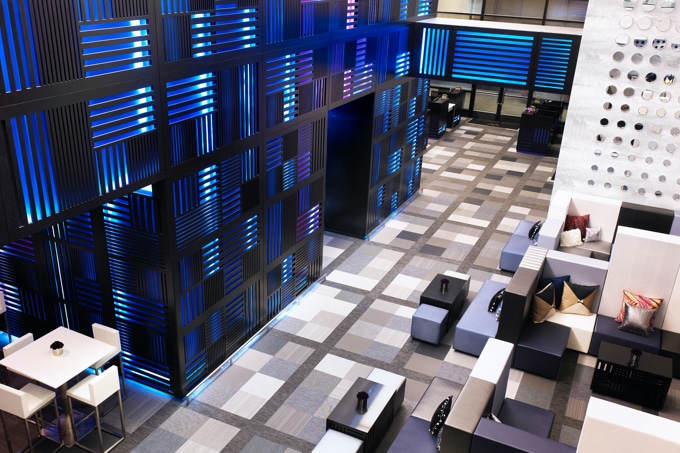
Companies like Marriott have the largest opportunity to set the standards on sustainability for the hospitality industry due to their brand recognition and wide-spread customer base. They understand this and have initiated their corporate social responsibility campaign, Serve360, in order to work toward their sustainability goals by 2025. Marriot has set applause-worthy goals in the areas of reducing environmental harm, building and operating sustainable hotels and sourcing sustainable materials in their supply chain. The company has already phased out all plastic straws and stirrers across all of its locations globally! They also provide electric vehicle charging stations as a complimentary service as most of their locations, enabling eco-conscious travelers to stay with them easily. All of their goals and metrics on impact to date are available on their website. Their commitment to environmental sustainability and their transparency of reporting their impact should serve as an example for other hotel chains who have not yet thought about how these decisions can impact their profitability in the long term.

Sustainable decisions not only need to be made in the hotel locations and guest rooms of these businesses but also behind the scenes in the company headquarters and other offices. The Seaport Hotel in Boston, known as one of “America’s greenest hotels” has tackled this issue by providing employees with a solution to replace single-use plastic water bottles and seltzer cans that were generating a huge amount of waste. William Hacking, Director of Food & Beverage for the hotel, was originally looking for a way to influence healthier eating and drinking habits of Seaport Hotel employees when he found Bevi. This smart water dispenser drives workers to drink more water during the day because of the joy that comes with completely customizing your delicious beverage. Not only that but Hacking stated, “Before the Bevi machine was installed, 70% of the employees were drinking soda with their meals. Now, with the Bevi machine, more people are getting unsweetened, flavored sparkling water instead, and soda consumption has dropped to 10%.” With increased hydration comes increased productivity and alertness, and a happy workforce is a successful one. Not only has the water dispenser helped with Hacking’s goals to foster a more health-conscious workforce, but it has helped Seaport Hotel’s hold onto their “America’s greenest hotel” accolade.
In a 2018 Global Luxury Travel Insight study, Fairmont Hotels & Resorts learned that 80% of travelers are looking for hotels that provide “experiences that are not detrimental to the local community” and that a majority of those travelers also want their hotel to implement “environmentally sustainable practices”. The Fairmont hotels are very popular amongst luxury business travelers and as more millennials enter this bracket, their need for sustainable hospitality solutions as a group increases. At their St. Andrews Bay hotel, this company has decided to replace the disposable plastic water given to visitors with “specially designed refillable water bottles”. Hotels can make travel easier for business clients by providing them with convenient refilling stations throughout their locations. Here is a list of the 5 best reusable workplace water bottles that the environmentally-minded business traveler is using these days.
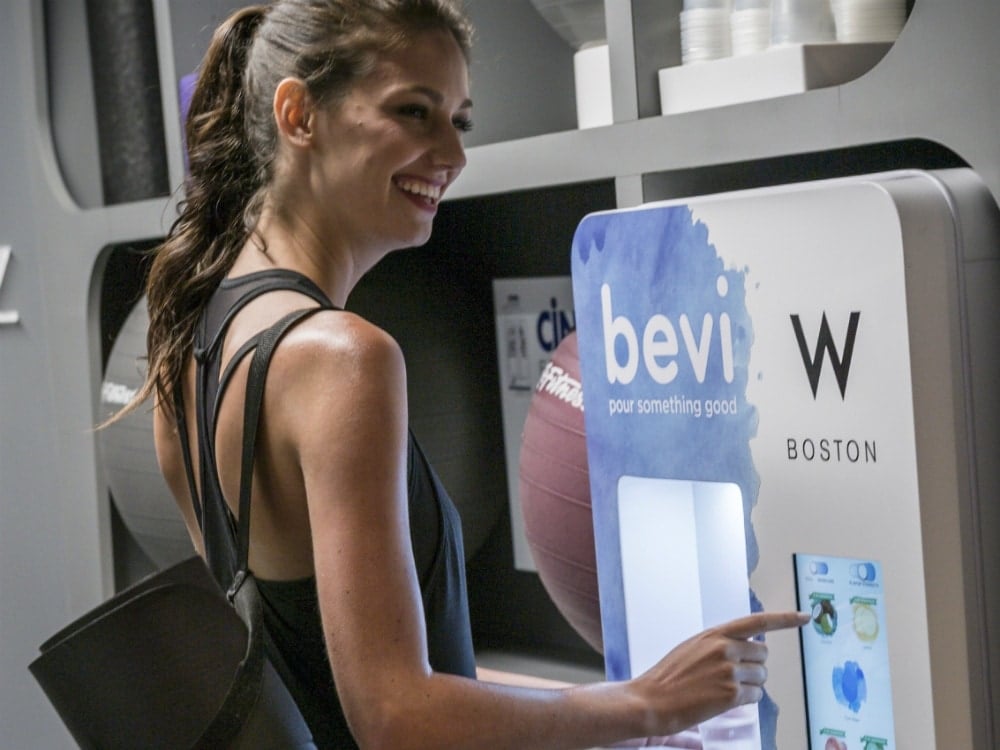
Whether you are a global conglomerate tackling long-term sustainability goals inline with the UN Sustainable Development Goals like Marriot, designing your hotels for mindfulness and eco-consciousness like 1 Hotel’s, or simply trying to make everyday operations greener like the Seaport Hotel, there are so many changes the hospitality industry can make in order to do less harm to the environment, invite new customers in without losing the old, and benefit the bottom line in the long run. Check out these articles to see what other hospitality companies are doing to meet their sustainability goals:
One last thing! If you work for a hotel or have the ability to share Bevi with someone who does, please refer them through our website at https://bevi.co/referral-bevi
It’s an average morning at work and you’re sitting there going through your emails and as you’re sipping on a hot coffee in a styrofoam cup, the teammate working nearby tosses his first plastic water bottle of the day in the trash bin under his desk. At the same time, someone around the corner is changing the printing cartridges and throwing the used ones away while someone else opens an energy bar wrapper in the breakroom. You go to write something down on your notepad but the pen has gone dry, so you throw it like a basketball at a bin across the room, swish! The amount of single-use products that office workers use in a single day can really be astonishing. For someone who works in an office, the average amount of waste they generate is 4.4 pounds per day. Then if you consider the number of people who work office jobs, the amount of waste created becomes almost unfathomable. Much of this waste can actually be recycled but the current infrastructure and patterns of behavior in most American offices has left us with a waste-generation problem. Recently the issue of microplastics, a symptom of the disease that is plastic waste, is creating serious health risk issues for humans across the globe, potentially including yourself.
Anything that you use in your office that is made with plastic materials (e.g. pens, plastic bottles and cups, cutlery, coffee pods, etc.) either ends up in a landfill or sewage. In that landfill, the plastics break down into tiny pieces about the size of sesame seeds or even smaller (5mm or less in length). These are microplastics and from the landfill, these small but mighty plastic shards leak out of landfills and end up washed into nearby waterways such as rivers and ponds. Water filtration systems fail to stop these harmful materials from reentering our lives. They eventually make their way via those waterways into the oceans and lakes, into the fish and other animals that we consume, the water that we drink and even into the air that we breathe. Humans can come into contact with microplastics through ingestion, inhalation, and skin contact, and can cause health issues like cancer, organ failure, diabetes, neurological and reproductive issues, amongst others. These microplastics are pervasive across the globe and scientists don’t fully understand the extent of this problem or the long term impacts they could have on human health and the environment. What scientists do know, however, is that these materials are extremely harmful to marine life in the short-term, this puts an essential nutritional resource to many cultures across the globe at risk.
While you may think that you can avoid microplastics simply by not eating fish, unfortunately, that is not the case. Researchers at the University of Victoria in Canada analyzed microplastics levels in the bodies of various people and found the biggest sources of microplastic to be not only from seafood but also from the air they were breathing and bottled water they were drinking. That’s right, bottled water! The very thing that is breaking down and creating the microplastic problem in the first place. An article in Time magazine states, “when people drink their water only from bottled sources, they ingest about 90,000 microplastic particles every year from that water, but people who drink only tap water get 4,000 of such particles a year”. This fact is shocking and certainly has left us with a distrust of bottled water here at Bevi. Because we know that microplastics are harmful to our bodies, we need to start to reduce the amount that we are allowing to enter the environment and ultimately our food chain. It is not enough to simply get better at recycling single-use plastic products. We also need to work at not creating them in the first place. Workspaces and offices are one of the largest sources of plastic pollution and there are so many ways these spaces can be altered to be better for the environment and better for the health of their employees. Read on!
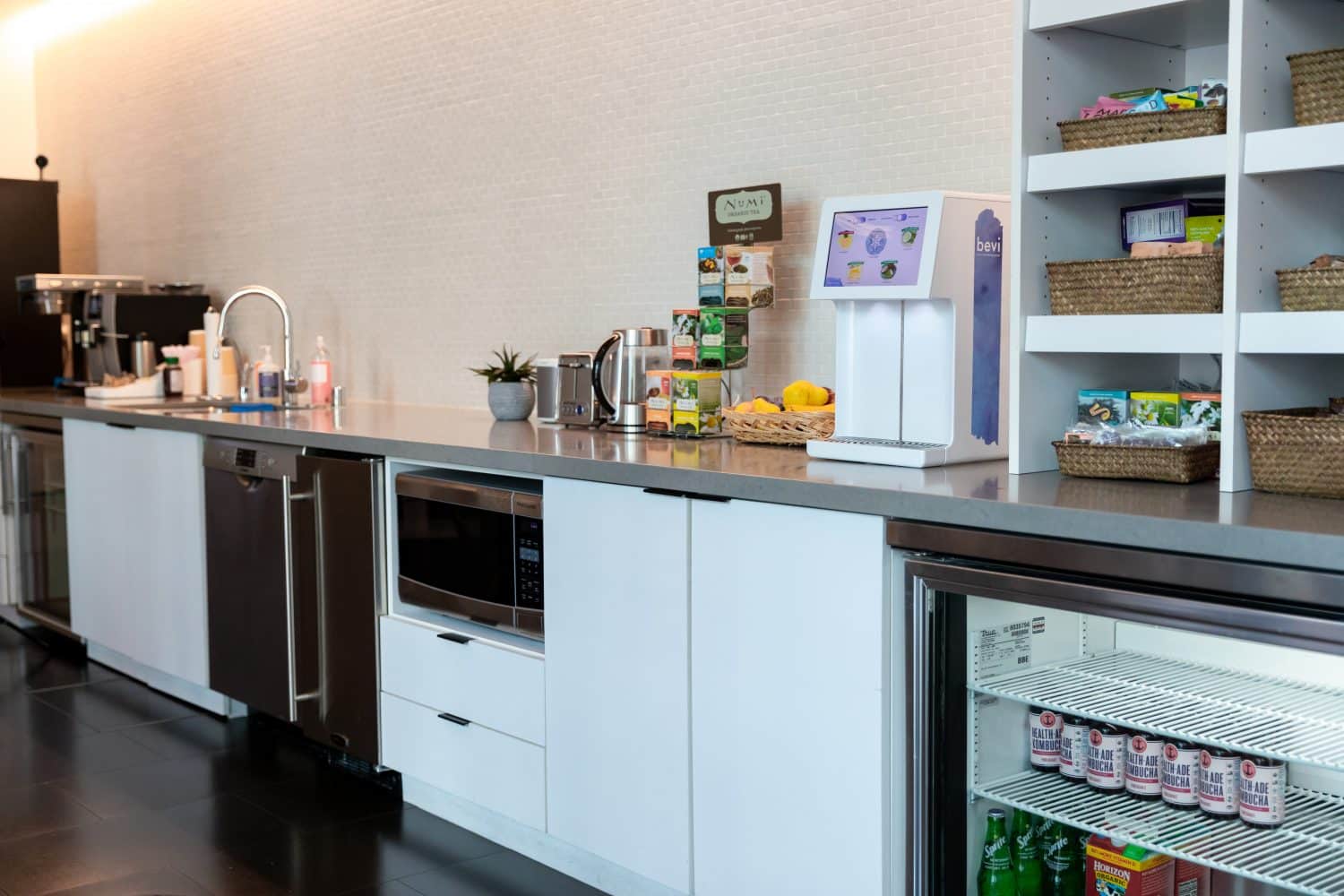
Office managers and eco-friendly workplace warriors can really help when it comes to combating the issue of plastic waste and microplastics. Initially, there might be some investment needed in order to move away from things like single-use plastic forks and spoons and toward reusable silverware that is much better for the environment. There may be other hurdles to overcome, such as not having a good recycling program in your area. There may also be some pushback from co-workers initially, who are used to having their iced coffee in plastic cups every day or who just don’t see the urgency in changing their behavior. Here are some steps you can take to reduce the amount of plastic waste coming from your office and in turn you will be helping to reduce the amount of microplastics in your surrounding environment. Ultimately your company and your co-workers will thank you.
 There are so many great zero-waste influencers on social media these days and they are helping to teach others about all of the great DIY projects and eco-friendly products they use in order to reduce the amount of waste they generate. You can follow a lot of these folks on Instagram such as the waterthruskin and get inspired to go waste-free yourself. Follow accounts like zero.waste.collective that provide tips on things like creating a zero-waste dishwashing routine. That’s something you could implement in the office!
There are so many great zero-waste influencers on social media these days and they are helping to teach others about all of the great DIY projects and eco-friendly products they use in order to reduce the amount of waste they generate. You can follow a lot of these folks on Instagram such as the waterthruskin and get inspired to go waste-free yourself. Follow accounts like zero.waste.collective that provide tips on things like creating a zero-waste dishwashing routine. That’s something you could implement in the office!

In order to make changes, one often has to find the urgency to do so. There is no way to find the urgency unless you know how much you are actually wasting. A good way to do this is an office-wide trash audit. It can be eye-opening and will spark behavior change amongst your co-workers. In order to do this, take a trash bin from different parts of the office including the breakroom, the printer room, conference room, or whatever other rooms you may have. Dump it out and with gloves on go through it, and write everything that you find in there on a whiteboard or piece of paper. If there is more than one of something, for example, multiple plastic cups, just put extra tally marks next to that item on your list. If you’re noticing one type of garbage taking up most of the space in the bin, you might try to make that the first thing you try to switch from disposable to reusable. You can even share with the rest of the company what you found, and give them the heads up that there might be some small changes coming their way.

To get buy-in, tell the people in your office why these changes are important and thank them for working with you to make your office healthier and more sustainable. Start a BYOB initiative and encourage people to bring their own reusable coffee cup and/or a reusable water bottle. If your company can, a good way to discourage the use of disposable plastic products is by supplying team members with company-branded water bottles or travel mugs! Plus when they’re using the cups out-of-office, these can serve as free advertisements for your business!. Motivate team members to pack lunch from home and avoid eating out. This might be difficult to get everyone to do, but try tying this initiative in with a healthy-eating initiative. Something that would help start this process would be to make sure you have a refrigerator where your co-workers can store their lunches, and perhaps even a dishwasher if possible. Employees can go one step further and bring bamboo or metal cutlery and their own reusable straws. Every little thing helps! The most important part of this part of the process is raising awareness across the company. Choose someone to spearhead and be the face of the zero-waste initiative. You can incentivize your co-workers by putting different teams in competition with one another to see who can reduce their plastic waste the most in the upcoming months.
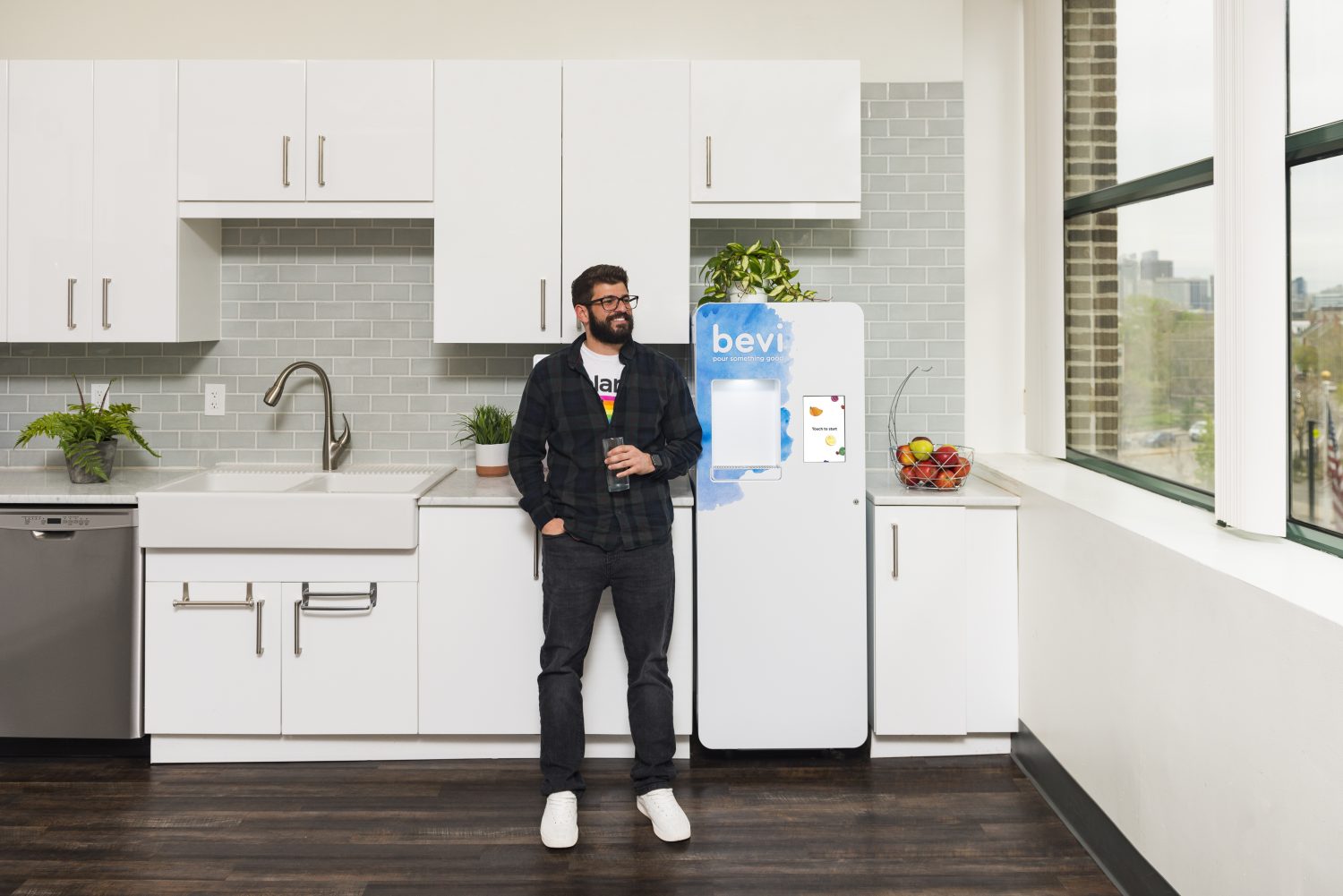
Now that you got everyone using their reusable coffee mugs and water bottles, it’s time to take things up another level. There are tons of innovative products on the market that are specifically meant to reduce the amount of office waste that a business might generate. Bevi is an awesome way to inspire employees to refill their bottles all day long and save office managers from the stress of restocking shelves with beverages. With Bevi, your co-workers can completely customize their beverage with carbonation or different flavors. This makes the hydration experience throughout the workday much more exciting and generally reduces the amount of dehydrated and angry people in the office. Bevi is often cheaper than continuing to buy and stock tons of single-use seltzer cans or plastic water bottles. Additionally, if you have anyone coming to the office, the Bevi is a fun way to entertain your guests while also providing them a delicious and healthy beverage.
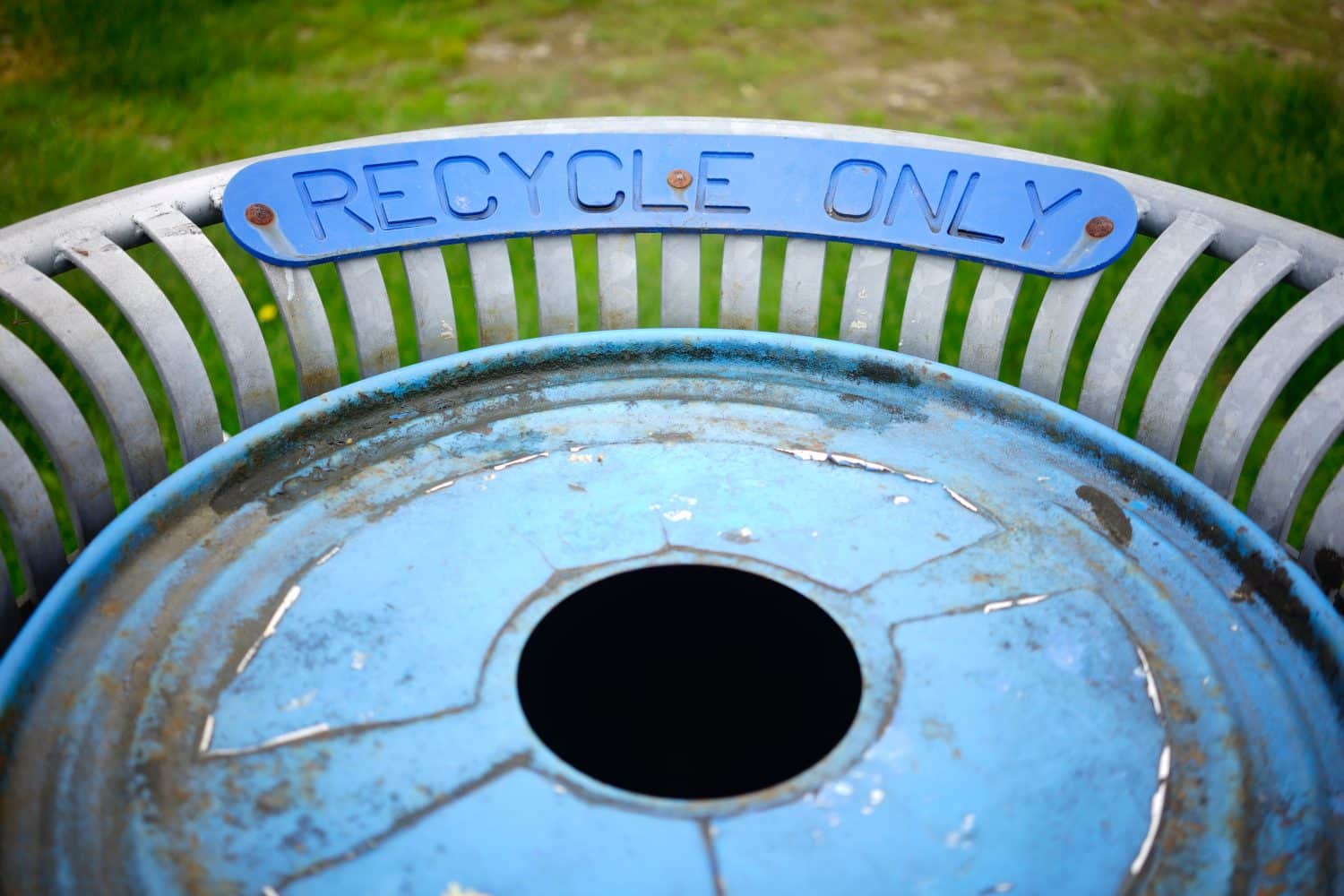
Recycling is not standardized throughout the US and often much of what we think we’re recycling ends up in landfills anyway. Some cities are better at recycling than others, so it’s important that if you are trying to become zero-waste in the office, you should research the recycling programs for your general area. If you find that the recycling programs in your area are inadequate, there is a company called TerraCycle who is ready to help you! TerraCycle has various programs and products aimed at eliminating the idea of office waste. The Break Room Separation Zero Waste Box™ is a good way to collect all of the recyclable material from your breakroom. TerraCycle will provide you with points that can be redeemed for various prizes or exchanged for money toward a charity of your choice.
We spend so much of our lives in our workplaces and within those spaces, we each generate a huge amount of waste. Most of that is plastic waste that ends up as harmful microplastic particles that could harm the health of our employees and co-workers later down the line. Shouldn’t we all be taking steps to reduce the amount of waste we generate during the workday? Hopefully, this information and our tips will help you kick off a zero-waste initiative in the office, and please share this article with other office managers if you found it helpful!
As the general public consensus continues to shift towards a greater environmental consciousness – a phenomenon being labeled ‘The Attenborough Effect’ – an increasing number of businesses are beginning to implement eco-friendly practices into their daily operations.
Today we’re taking a closer look at how we can introduce sustainability in office environments across the board. Ensuring your employees can begin to think with a greener mindset and minimize the environmental impact of your business.
In today’s digital world, you’d be forgiven for assuming that paper has little place in the 21st-century office. On the contrary, the average worker still uses a shocking 10,000 sheets of copy paper each year, of which an average of 6,800 sheets wasted.
This has a significant impact on deforestation – causing pollution, and habitat destruction, all to the detriment of the wider environment. The alternatives to this over-indulgence in paper use offer not just a greener solution, but a more convenient one. Cloud storage solutions offer paperless storage that can be accessed across various digital platforms instantaneously. So wave goodbye to wading through filing cabinets and endless waiting on copy prints – and embrace the digital age…
For many, one of the key drawbacks to environmentalism is convenience. While the majority believe in the cause, the fact of the matter is we’re still facing a major environmental and ecological crisis – meaning not enough people are putting thoughts into action. But with the ready convenience of many environmentally damaging options, from plastic bottles to cars, who can blame them?
To combat this issue, look to offer convenient eco-friendly alternatives around the office wherever possible. If your company’s office has a canteen, for example, opt for eco-friendly packaging for foods such as sandwiches, enabling your employees to make greener choices without even having to adjust their usual routine.
Elsewhere, eliminate the use of single-use plastic bottles through the installation of Bevi. A revolutionary smart water dispenser, the easy-to-use system provides still and sparkling water on demand, with a choice of flavors, meaning employees will ditch the store-bought water for a tastier and greener alternative. Bevi has saved over 100 million bottles and counting!
Cars are responsible for a mammoth 20% of the world’s carbon dioxide emissions annually. As such, looking to promote a greener approach to commuting amongst your employees is a sure-fire way to reduce your company’s carbon footprint and get your employees into thinking more about environmentalism.
Of course, the best way of reducing carbon emissions is to travel via carbon-free means. Equip your office with a bike rack or sufficient storage space for your employees to safely store their bikes. This will enable employees living within reasonable distance to opt for a healthier, greener way of commuting.
For those that live further, look to promote a car-share scheme. Where employees who live close to each other can give each other rides to and from the office. Though not the greenest way of traveling, one car is ultimately better than two or more!
As evident, the implementation of sustainable practices in your business doesn’t require a complete overhaul of your daily operations. When all put together, little changes can go a long way in creating a greener future for us all.
Learn more tips and tricks to make your office more eco-friendly, in this article!
Biodegradable cutlery, recyclable plastic cups, sustainable to-go containers—new eco-friendly products seem to pop up everyday. While these eco-friendly alternatives are a step in the right direction, it’s often clear where and how they should be disposed.
In this Recycling Refresher Guide, we’re going back to the basics to solve the everyday mysteries of recycling at home and in the office. Check out the guide below for basic recycling tips and a brief look into composting, TerraCycling and e-waste recycling.
It goes without saying that landfills are one of the largest sources of human-related greenhouse gas emissions. In fact, landfills were the third-largest source of methane emissions in the US in 2016. The less plastic sent to the incinerator, the less methane in the earth’s atmosphere, and the less potentially harmful pollutants in our air, water, and land.
Recycling helps to reduce our reliance on ‘virgin’ metal, plastic, and glass products, ultimately conserving natural resources such as timber, water, and minerals.
Collecting raw materials, such as ore, and turning them into usable materials such as plastic, metal, or glass requires a significant amount of energy. Transforming recycled materials into usable materials, however, takes much less energy. The resulting energy savings varies among materials. Recycling glass only saves about 10-15% of the energy needed to make it from scratch, while recycling aluminum saves 94% of the energy needed to create aluminum from ore.
Cardboard, glass bottles, aluminum cans, newspapers—most people recognize that these items belong in the recycling.
It’s no surprise then that the five most commonly recycled materials are aluminum, glass, paper, plastic, and steel. Among these groups, aluminum likely yields the most energy savings, as recycling aluminum saves 94% of the energy it takes to process the raw ore (also known as bauxite) and doesn’t decrease the quality of the metal. Some manufacturers even claim that they’re able to put a recycled can back on the supermarket shelf in as few as 90 days.

Taken from AmericaRecyclesDay.org
Within the category of plastic, plastic bottles held the number one spot in 2015 as the most recycled plastic product in the US. Did you know that recycling 10 plastic bottles will conserve the same amount of energy it takes to power a laptop for 25+ hours? That’s some serious savings!
So know what should be recycled… but do you know where and how? Check out the recycling tips below for a refresher!
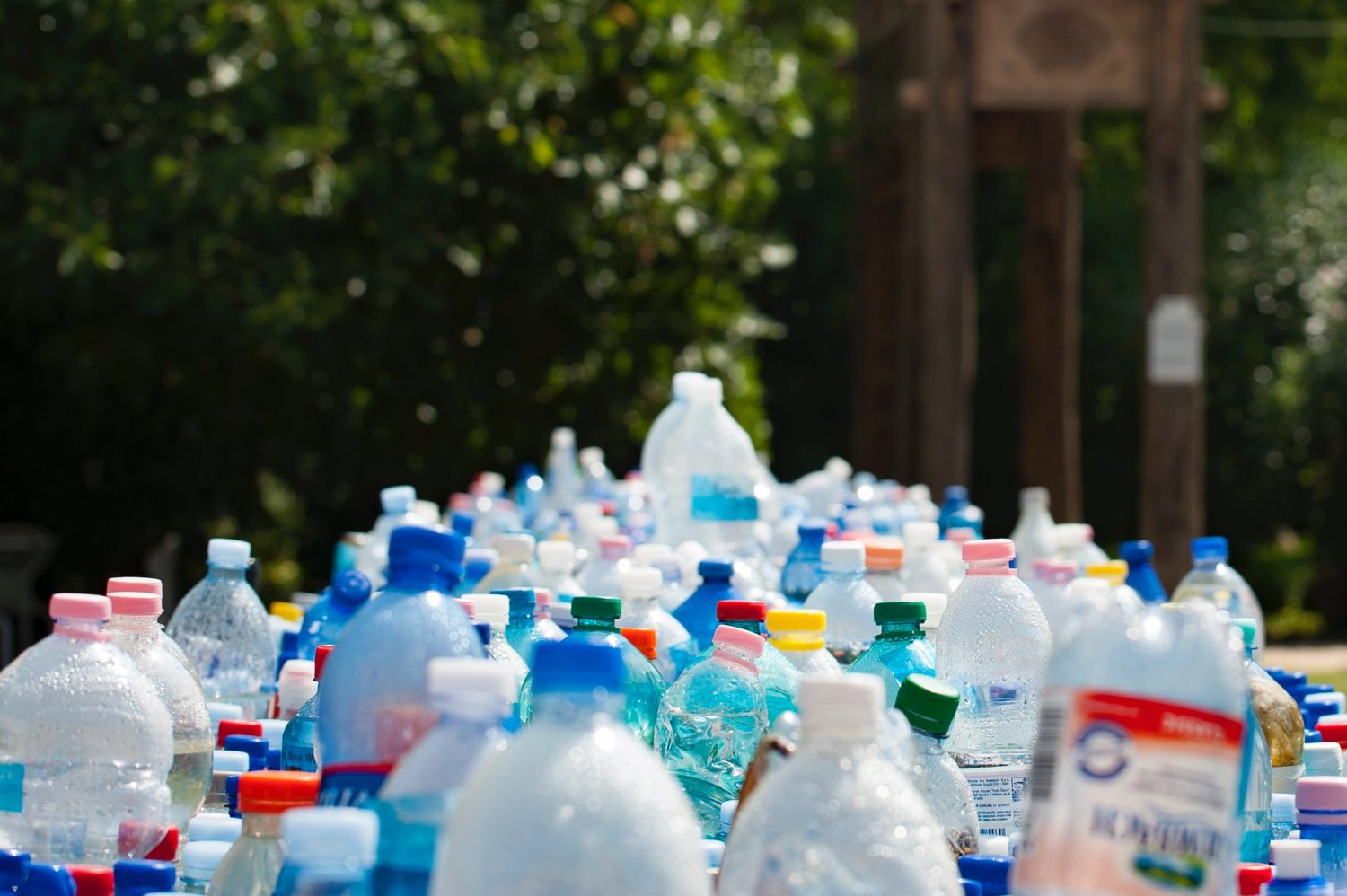
When it comes to bottles and cans, recycling facilities take care of most of the work. Despite the fact that they’re made from a variety of materials (i.e. plastic, glass, and aluminum), bottles and cans belong in the same recycling bin. (This may vary by region.)
Here’s a few recycling tips to make sure your bottles and cans properly make their way through the waste stream:
Where should you toss a bottle or can? Find the green or blue recycling bin. Some public containers might have lids with bottle-sized slots in them, indicating the container is solely for plastic, glass, or aluminum recycling, as opposed to paper.
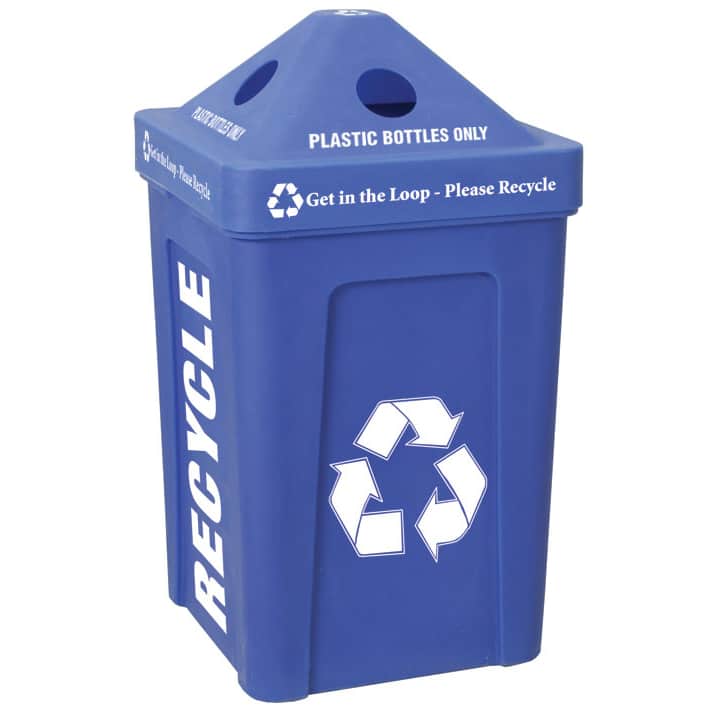
If there’s visible residue, give your bottle or can a quick rinse. Don’t waste water scrubbing your bottles and cans: a simple swish of water will do the trick! If the container held a stickier substances (such as a juice or smoothie), it may require an extra scrub.
Check with your local facility to see if plastic bottle caps are accepted. Plastic bottle caps are often made from a different plastic resin than the bottle itself as your local facility might only accept the bottle.
Remove bottle caps made from aluminum or metal. While aluminum and metal are recyclable, lids made from these materials often pose problems for recycling machinery. (Some facilities, however, can sort and recycle metal caps; check with your local service for best practices.) Send your metal caps to a metal recycler for reprocessing instead.
Should I crush my bottles and cans before recycling? It depends. If you or your office has single-stream recycling, it’s best to not crush your bottles, as they will be harder to sort at the recycling center. (This may not be the case in all locations; check with your local center for more accurate information). If you have access to multiple-streams of recycling, it’s more acceptable to save space by crushing your bottles and cans.

One of the most recycled products in the US (in 2015, almost 67% of paper was recycled), paper still constitutes 33% of the materials that end up in the trash.
In addition to reducing your consumption, here’s a short list of paper recycling tips to maximize your eco-efforts:
Not sure where to toss your paper? Look for the blue or green recycling bin. Dual-stream and single-stream recycling programs will either use a blue or green container to indicate paper recycling. Some public bins might have a lid with a thin slot, indicating the container is purely for paper recycling.
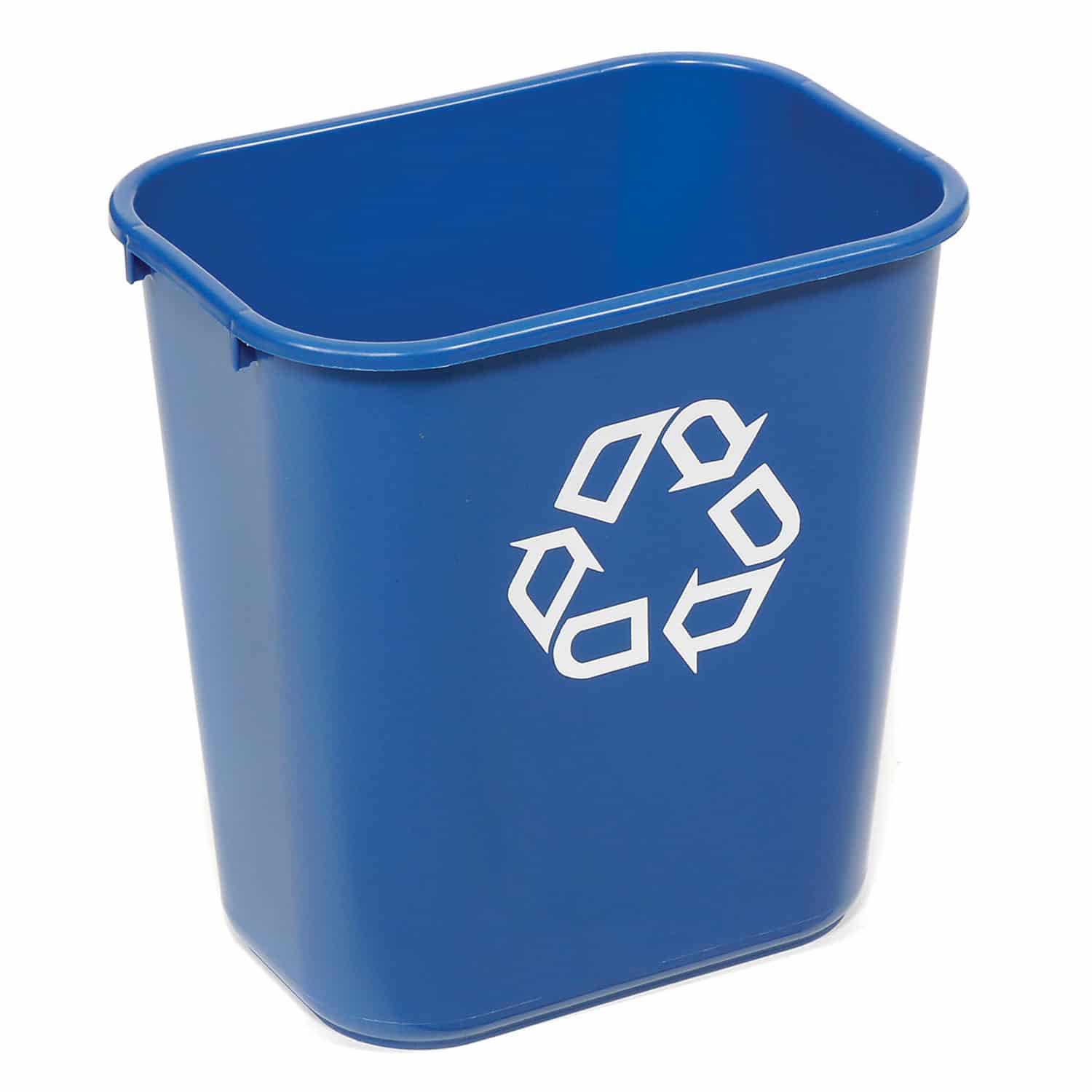
Don’t let your paper recycling get wet. Wet paper and cardboard will not be processed by your recycling facility.
Flatten your cardboard boxes to maximize the space in your recycling bin. Your neighbors, office manager, and waste management service will thank you.
Buy recyclable gift wrap or reuse newspaper. Each year, Americans throw out more than 4 million tons of wrapping paper. Reduce your waste by purchasing gift paper without a laminated or plastic outer coating.
Don’t shred your paper. Shredded paper is more difficult to process as the length of the fibers has been significantly reduced. Protect any sensitive information by blackening it out with a sharpie instead. (And if you do have shredded paper to throw out, put it in a paper bag and clearly label it.)
Think twice when recycling paper with a plastic lining. Consult your local waste management service to find out what the local recycling facility is able to process.
According to National Geographic, about 91% of the plastic on our globe has not been recycled. Furthermore, over half of the plastic manufactured ends up in a landfill within a year’s time. Some studies indicate that there will be more plastic than fish in our oceans by 2050.

Help keep plastic waste out of our oceans and landfills with these recycling tips for your everyday plastic items:
Before tossing your plastic, check the symbol. You’ve probably noticed a small triangle with a number inside of it on plastic containers before. This symbol indicates the type of resin used to create the plastic, thereby helping the consumer know where, how, or if it can be recycled. Consult with your local waste management service to find out exactly which kinds of plastic it supports.
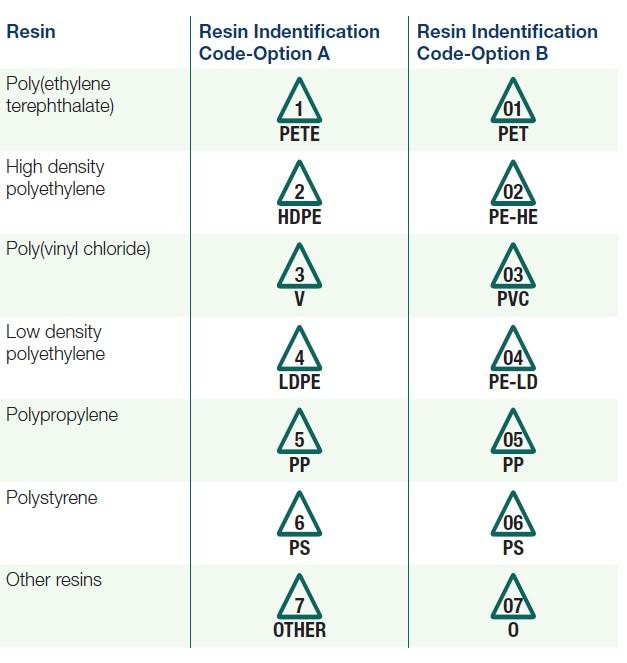
Note: the green triangle does not indicate a product is recyclable; it simply identifies the type of plastic.
Don’t worry about peeling off the labels. Most recycling facilities are able to easily get rid of labels during processing. If a container clearly has a paper label, consider recycling it with your paper rather than your plastic.
How much do I have to clean my peanut butter jars before recycling? Much less than you think. Scrape out as much of the residual product as possible, but don’t worry if the jar isn’t sparkling clean. Most recycling facilities will thoroughly clean your plastic before processing it.
For information on plastic bags and other films, see the below.

Typically made from corrugated cardboard, pizza boxes are recyclable if they have not yet been used. Once the box is soiled with pizza, calzone, or hot wings grease, it is no longer recyclable. These oils cannot be removed from the cardboard or paper during the initial pulping process used by most recycling facilities.
Broadly speaking, food is one of the biggest sources of paper recycling contamination. Think twice next time you recycle your takeout containers! If they’re made from paper and saturated with oil, they don’t belong with your recycling.
The type of container or bag you use for your recycling matters, especially if you have curbside collection. Do a quick search for your city’s regulations to find out exactly which bags or trash bins you should be using.

Plastic bags pose serious and costly problems to recycling machinery.
Unless your city explicitly mandates a specific type of bag, it’s best to avoid putting your recycling into plastic bags. No matter your city’s regulations, you should never use the small plastic bags you get from the grocery store for your recycling.
As this video of a recycling facility in Chicago exposes, plastic bags present serious issues for a facility’s machinery and staff. Before entering the sorting machine, employees attempt to remove all plastic bags from the batch. Many, however, slip through and end up wrapped around the machinery that helps to sort the recycling. Removing these tightly-wound bags from the machinery is both a costly and lengthy process. This ultimately wastes time the facility could otherwise spend turning recycling into new raw materials.
So what should you do with plastic bags? Well, in many cases, you can recycle them. The majority of plastic bags are made from #2 or #4 plastic (also know as high-density polyethylene or low-density polyethylene), both of which can be recycled. Many grocery stores have collection bins for plastic bags, making it fairly convenient to get rid of them. To find a plastic bag recycling location near you, use this locator.

The symbols for #2 and #4 plastic.
If you can’t identify the type of plastic, err on the side of caution and reuse the bag rather than recycle it.
Many eco-champions avoid the trouble of recycling plastic bags by using reusable tote bags at the grocery store or repurposing plastic bags for storage or organization.
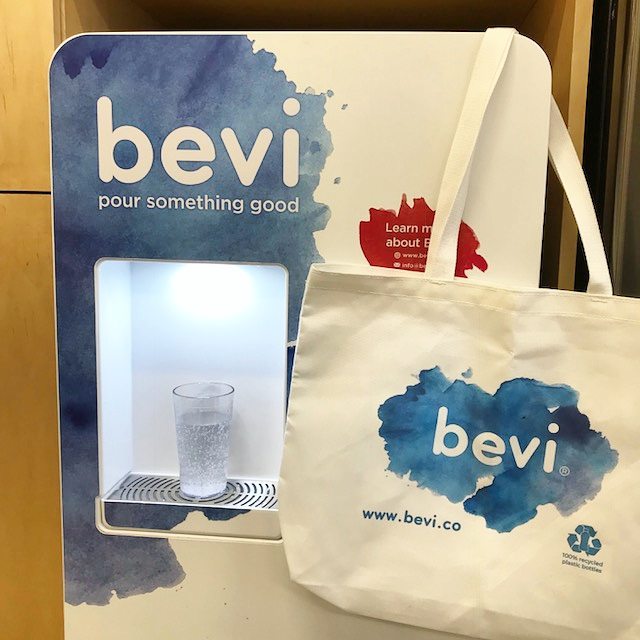
Here at Bevi, we love these reusable tote bags made from 100% recycled plastic bottles. Check out Enviro-tote.com to get your own custom reusable bags.
To find out more about how and where to recycle bags and other plastic films, see here.
Whether you’re interested in recycling at home or in the office, there are several ways to manage to your recycling. Many municipalities offer curbside collection of paper and plastic recycling, and most communities have privately-owned or volunteer-run drop-off centers as well as deposit programs at the local supermarket. These services ensure recycled materials make it to the proper facility, yet it’s up to you to sort your recycling and trash beforehand.
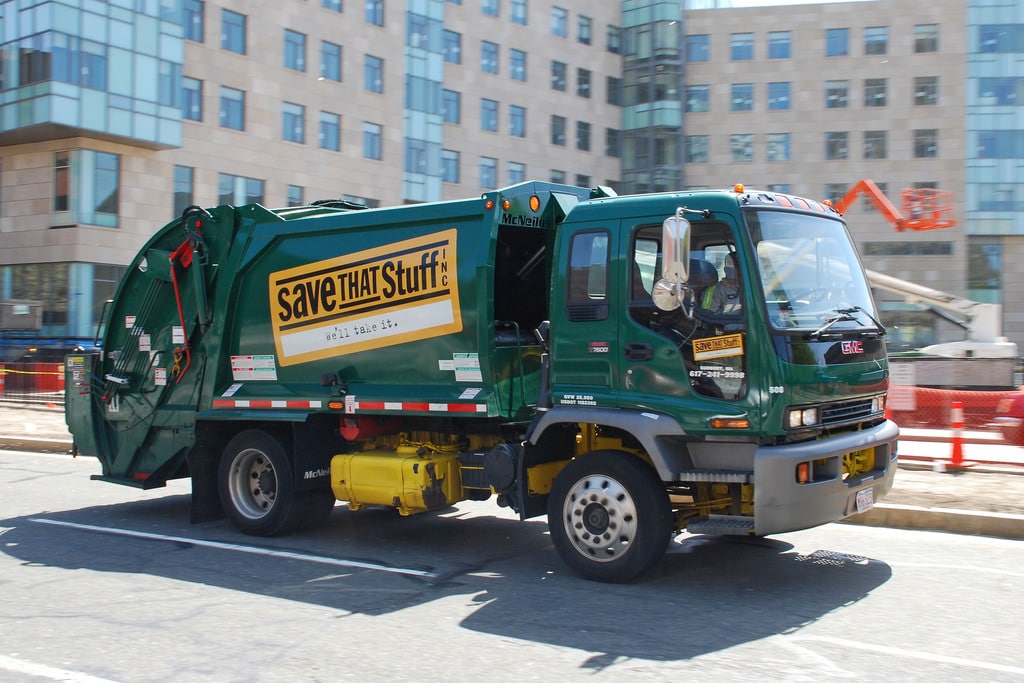
Located in Boston, Save That Stuff is a privately-owned recycling and waste services company that collects everything from vegetable oil to oyster shells.
Once collected, your paper and plastic waste is transported to a facility where it will first be sorted, then cleaned, and eventually processed into materials than can be resold and purchased as if they were raw materials. This process not only leads to energy savings, but also helps create new jobs. The 2016 national Recycling Economic Information (REI) Study found that for every thousand tons of material that was recycled, 1.57 new jobs were created. Not too shabby for properly sorting your paper and plastic!
Composting is a natural process in which organic matter decomposes into a nutrient-rich material called humus, or the more colloquial term, compost. Like recycling, compost turns trash into treasure: unwanted food scraps and lawn clippings transform into healthy soil that retains moisture, prevents plant pests, and reduces the need for chemical fertilizers.

As a rule of thumb, you can compost anything that was once alive. However, there are a few exceptions. You should generally avoid things like fatty meats and cheeses, as well as pet waste, to prevent unwanted pests and the spread of diseases.
Unlike curbside recycling, which has become a standard in most communities, curbside composting is more uncommon. This makes it quite difficult for individuals and offices to dispose of their food waste in an easy and eco-friendly manner.
One option is to start a compost heap in your own backyard. This works particularly well if your yard has a lot of tree-cover, as the compost heap will require dead leaves, branches, or twigs to stay healthy.
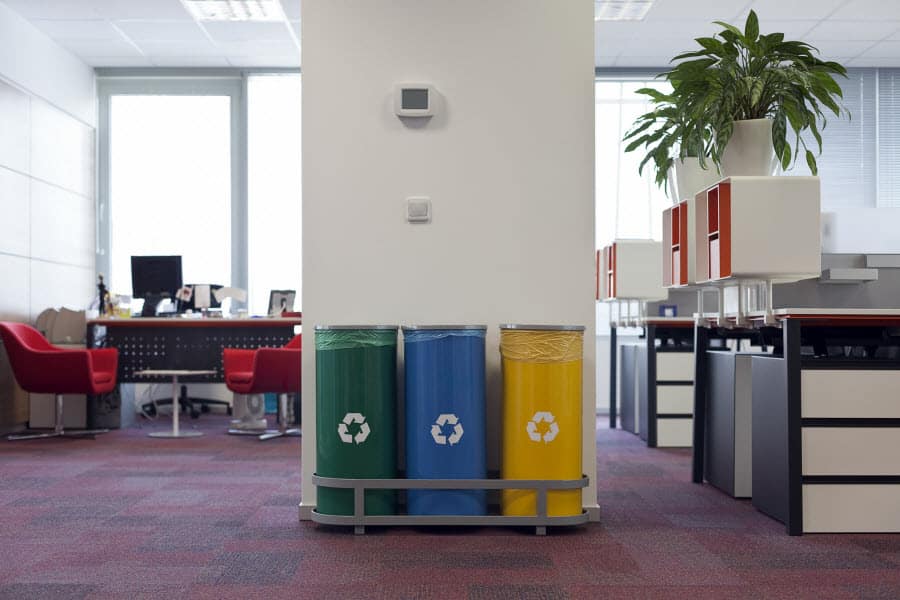
Paper, plastic and compost bins in an office.
If your home or your office does not have any outdoor space, there are many privately-operated services you can use to have your compost collected. (Here in Boston, many homes and businesses use Bootstrap Compost.) While they’re an additional expense, these services make composting just as easy as recycling. You do your part to separate your organic waste and the service does the rest!
Here at Bevi, we love our sustainable beverages, but we also love to snack. TerraCycle makes our snacking a guilt-free experience.

TerraCycle turns trash into treasure.
TerraCycle uses their Zero Waste boxes to collect ‘unrecyclable’ materials, such as snack and candy wrappers, from consumers around the country. They then reprocess these typically ‘unrecyclable’ products as practical, affordable products, thereby keeping them out of the landfill. While these zero waste boxes are on the expensive side, they’re a worthwhile eco-investment for your home or office. As far as we’re concerned, TerraCycling is the next best thing to reducing (or reusing) your plastic waste.
Even if you’re an eco-champion, E-waste is a difficult waste stream to manage.
Electronic waste, also known as e-waste, refers to consumer and business electronic equipment that is near the end of its life or no longer functioning. Things like blenders, microwaves, computers, keyboards, and cell phones all fit into the loosely defined category of e-waste. The proper disposal of e-waste is critical to keeping harmful chemicals, such as the flame-retardants, out of our eco-systems.
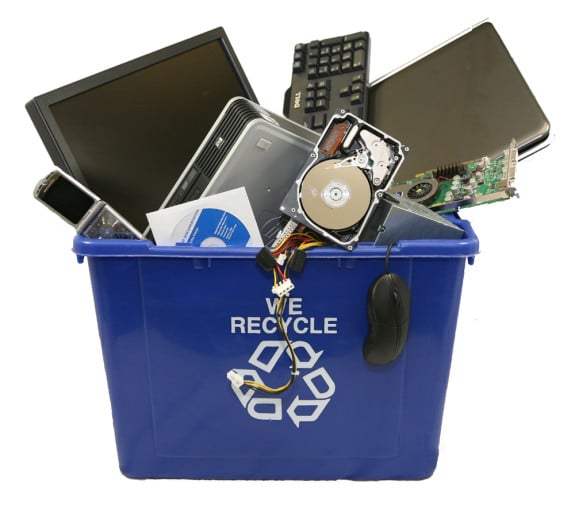
Before recycling your e-waste, first check if it can be repaired or donated. If it’s truly unusable, find an e-waste recycling center or service near you to ensure its proper disposal. Many companies even offer a special plan for offices, making it easy and convenient to get rid of e-waste at work.
The best way to conserve natural resources and keep trash from pilling up in the landfill is to reduce our reliance on single-use products, thereby reducing our overall waste. When you factor in the energy used to produce and transport one-time-use products, it’s clear that our land, air, and oceans cannot sustain this level of pollution.

This is exactly what spurred Bevi Co-Founder Eliza Becton to out-design the notorious plastic water bottle. After learning of the Pacific Garbage Patch, Eliza knew she had to do something to stop the sea of plastic waste from growing. But what? She knew it would be impossible to guilt people into changing their behavior. Instead, she knew she had to design something so efficient, so eye-catching that people would change their behavior voluntarily. The idea for Bevi was born.
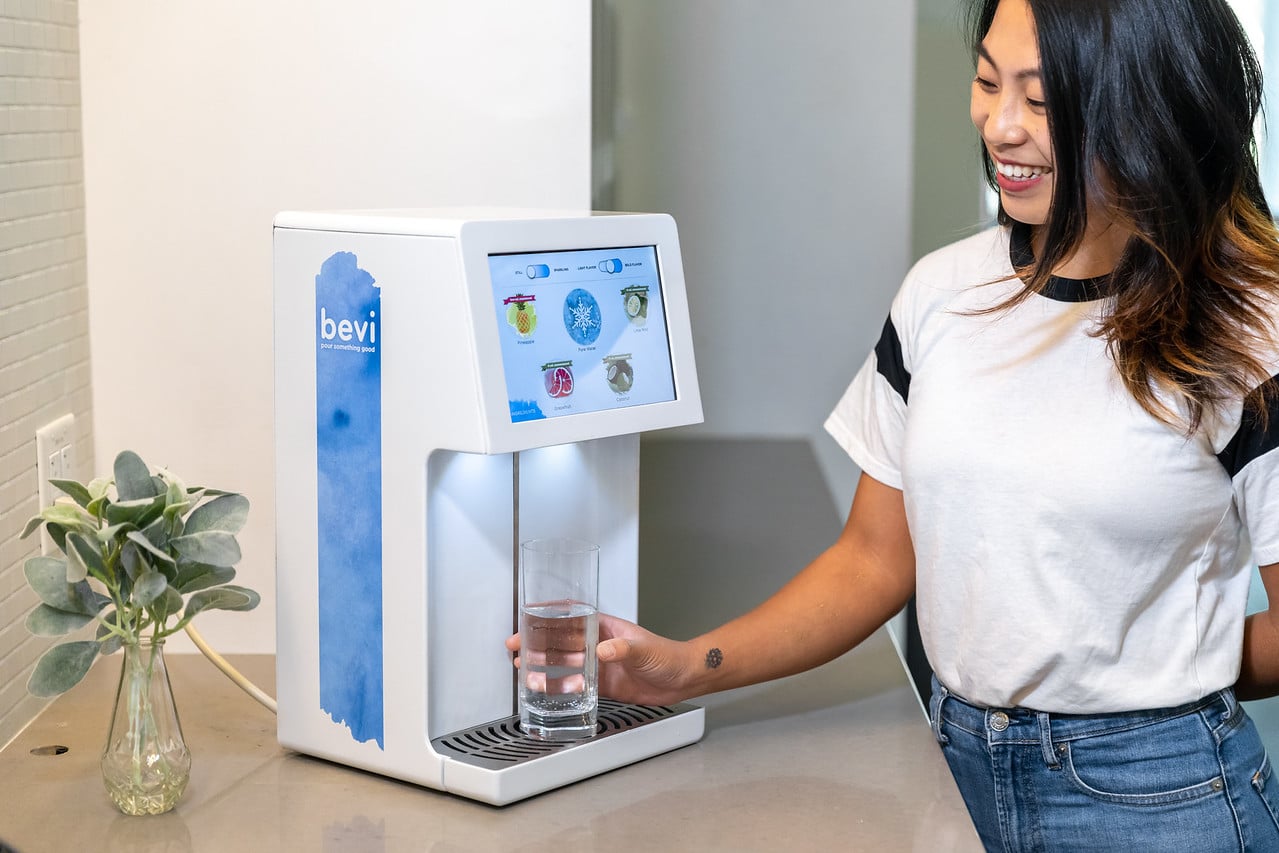
To make her vision a reality, in 2013 Becton teamed up with two friends, Sean Grundy and Frank Lee, who shared her interest in sustainability. Together they began prototyping a water machine that would provide healthy fizz and flavors on demand, encouraging people to use reusable bottles rather than relying on single-use plastic bottles. Today, Bevi’s smart water dispensers have saved the waste generated by over 54 million plastic bottles.
Whether in reaction to grassroots student initiative or their own concern with the global waste crisis, universities have started pledging to go zero waste in the upcoming decades.
This is no paltry promise. In many ways, universities are genuine waste management nightmares. Take for example move-out day, when frantic students often leave their unwanted belongings and trash in their dorm rooms or strewn across the sidewalk. University infrastructure is left to deal with literally tons of waste; and unless there are easily accessible donation stations, many reusable goods will end up in the landfill.
Despite the potential to be high-volume waste producers, universities are uniquely equipped to regulate and manage the amount of waste they produce. Campuses are tightly monitored areas, where residents live relatively structured lives and where typically an extensive on-site facilities management or custodial team takes care of most waste management concerns. Furthermore, universities already have effective communication channels in place: forums and liaison groups allow the public, i.e. students, to voice its comments and concerns—one of the key components of implementing zero waste policies.
Given these conditions, universities across the US have effectively used their communities and purchasing power to significantly reduce the amount of waste they send to the landfill. With Campus Sustainability Month coming up in October, even more college campuses are likely to jump on the zero waste bandwagon after revisiting their 2018-2019 sustainability goals.
Join the zero waste movement: check out these 12 zero waste initiatives you can bring to your college campus.
The road to zero waste begins with setting an attainable goal. Assess your current programs and resources, and create a schedule for meeting each aspect of your goal. It’s important to get the word out and get key stakeholders on board before officially launching any initiatives.
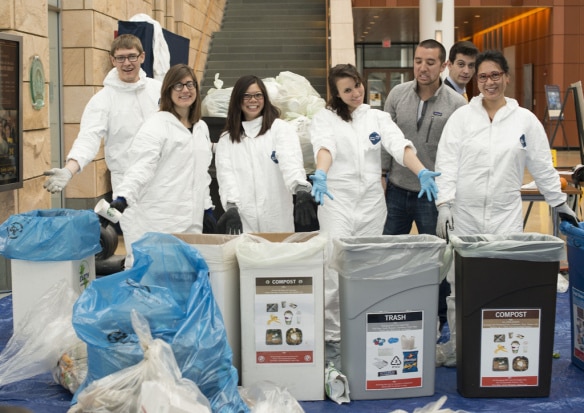
Waste audits provide useful benchmark data when setting sustainability goals. Choose a representative study area and time frame, and evaluate the effectiveness of your current waste management processes.

On any campus, move-in and move-out day are undoubtedly two of the most wasteful days of the scholastic year. To prevent lightly-used furniture and goods from needlessly entering the landfill, many schools set up donation areas and tents during move-out day. At the University of Texas at Austin, the student-run Trash to Treasure Project collects donated items at the end of every semester, and sells them back to the UT community for a $1 each, allowing used dorm room furnishings to find a new home.
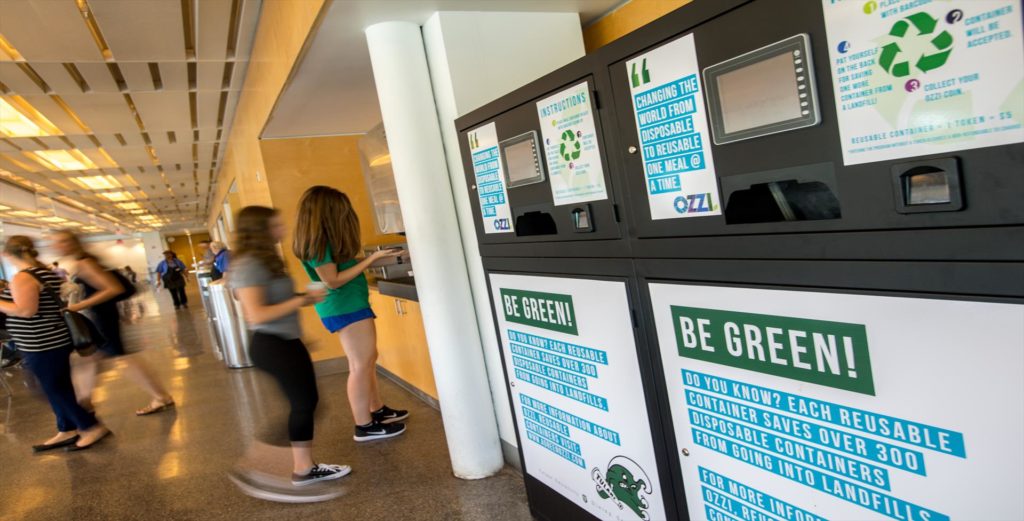
Eliminating plastic from day-to-day life on campus is not as intimidating as it sounds. Most universities have hydration stations scattered throughout campus, thereby encouraging students to fill reusable bottles and reducing the campus’ reliance on single-use plastic bottles. Other popular initiatives include issuing students reusable to-go containers and getting rid of plastic straws in cafeterias. Tulane University has implemented an exemplary to-go container program called OZZI, whereby students must use university-issued reusable to-go containers at specified on-campus eateries. Once the student has finished their meal, they return the to-go containers to the OZZI machines to be professionally sanitized and reissued.

If you can’t reduce, reuse! A Campus thrift store is a popular, and often lucrative, place to turn trash into treasure. If securing a space to store and sell clothes proves too difficult, monthly clothing swaps are a great alternative. Don’t just throw out the contents of the Lost & Found or dorm room dresser after move-out day: collect the clothes and find them a new home!
Stanford University, which is on track to be zero-waste by 2030, has an exemplary incentive program called ‘My Cardinal Green.’ First, all members of the Stanford community are asked to take a survey that suggests a curated list of sustainability actions. Upon completing the actions, participants then submit documentation outlining what they did. Finally, the program rewards participants with up to $75 in cash for their eco-friendly behavior.

While universities can control what they offer in their cafeterias and cafes, they can’t control all of the waste their students generate (i.e. whatever students buy and bring on campus). Terracycling allows plastic products that would normally end up in the landfill, such as candy wrappers, chip bags, plastic packing materials, etc, to get cleaned, processed and repurposed.

In recent years, on-campus food waste recovery programs have become standard. For example, Harvard University partners with the local Boston nonprofit, Food For Free, to donate surplus food from their freshman dining hall to the food insecure around Cambridge and Boston. On average, Harvard donates over 30,000 meals each year. Be sure to thoroughly review your state’s local regulations for food donations before forming a food recovery squad. And for food that is not able to be reheated, composting is the next best option.

From Campus Sustainability Month to Earth Day, America Recycles Day to National Clean Air Month, there are many ways to celebrate and promote sustainability on-campus. In addition to these yearly events, many campuses have weekly farmers’ markets that provide a great opportunity for student groups to host hands-on activities that teach others positive, eco-friendly behaviors.

While more and more stadiums are installing water refilling stations, concessions are unlikely to completely eliminate bottle water from their offerings. For this reason, every athletic event needs visible, easily accessible recycling and compost bins. Some stadiums have instituted composting programs for their central kitchens, developed food recovery infrastructure, and switched to compostable napkins and containers. One stadium in Chicago even recycles all their cooking oil by sending it to a facility where it is used to produce biofuels.
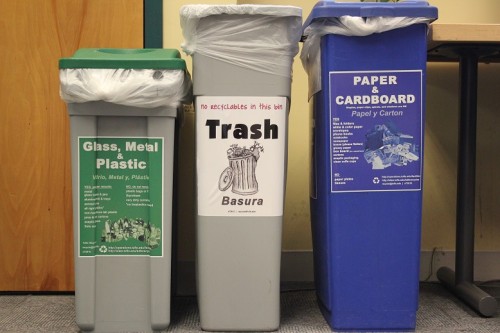
While most municipalities practice single-stream recycling, dual-stream recycling is a far more efficient system. Rather than mix paper, plastic, and glass products, dual-stream recycling keeps these products separate, thereby preventing contamination and maximizing the amount of material that’s suitable for reuse. Several universities, such as Harvard, Stanford, Boston University and Tufts, to name a few, practice dual-stream recycling and many third party waste management services now offer it as an option. In general, optimizing the efficiency of on-campus waste management programs has become a priority for most major universities.
In addition to food waste, universities often generate a substantial amount of organic waste in the form of leaves, lawn clippings, and branches. To deal with the byproducts of quad and garden maintenance, in 2016 Sacramento State University created a Closed Loop Comprehensive Organic Waste Diversion Program in which outdoor organic waste was turned into a bio-compressed natural gas. This fuel was then used to power the campus’ complimentary shuttle service, thereby launching the university on its journey to divest from fossil fuels.
https://www.ecocyclesolutionshub.org/
http://www.sustainabilitycoalition.org/collaborating-grand-goal-zero-waste-city-university-2020/
Gen Z—the generation born between 1995 and 2010—now makes up the majority of student diners across the country.
Unlike the preceding generation, Gen Zers are more ethnically diverse, grew up in an entirely digitally-connected age, and are more willing to spend extra on authentic food or dining experiences. Furthermore, this group is even more globally-aware than millennials, and is considered an outwardly politically-, environmentally- and socially-conscious generation.

In reaction to these attributes, food service programs have begun formulating creative solutions to keep young diners satisfied with their daily experience in the university cafeteria. Unsurprisingly, technology—as well as an increased focus on healthy, clean food and beverages—has played a huge role in the creation of Gen Z-friendly dining spaces,
Here’s a list of 5 ways university dining halls are adapting to Gen Z’s dining habits and interests:
From a variety of meal plan options to DIY bars, customization is key when it comes to menu planning for Gen Z diners. According to the 2016 Generational Consumer Trend Report, 50% of Gen Zers rated the ability to customize their meal (i.e. choosing a portion size or some of the ingredients) as an important aspect of dining.
This, however, does not require you to deconstruct every entrée into a build-your-own bar: simply increase and vary the types of sides that you serve with your mains. Another strategy is to pick a night in which your dining hall is not too busy, and set-up a small cooking station where one of your line cooks can cook smaller, specialty plates with seasonal ingredients.

A similar approach can be applied to your cafeteria’s beverage offerings: allow your diners to customize their morning coffee by creating a mini-coffee bar with specialty milks and a rotating inventory of flavored syrups. Alternatively, you can offer healthy flavored drinks with Bevi, the smart water cooler, which would allow your diners to customize your beverage on a touchscreen before filling their glass.
So, the next time you start planning your menus, be sure to consider a few ways your diners could personalize the items you decide upon.
Industry research has shown again and again that convenience is a top priority for consumers of all ages, and is of a particular importance to millennials and Gen Zers. Many food service programs are embracing this trend by expanding the methods by which diners can gain entrance into the cafeteria or purchase their food.
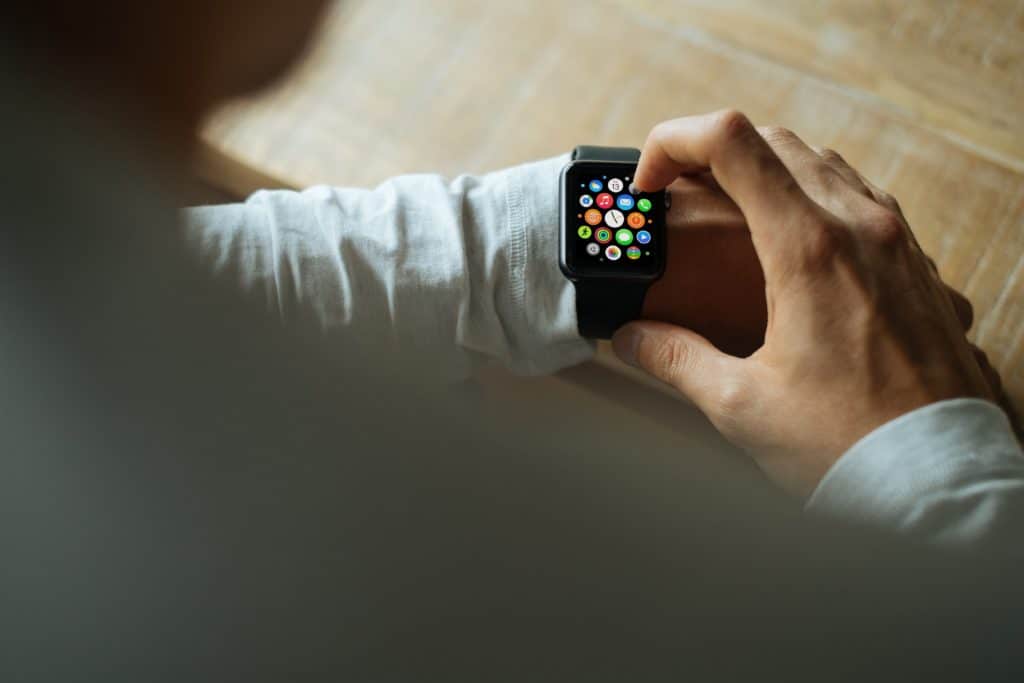
Rather than having students keep track of a physical card, many universities are in the process of making their students’ ID information accessible on smart devices. A recent report by Business Insider revealed that starting this fall, students at Duke, Temple, Johns Hopkins, and The University of Alabama (among others) will have the ability to enter the dining hall, and make vending machine purchases, using both Apple Watches (OS 5) as well as iPhones running on iOS 12.
Given the growing ubiquity and convenience of smart devices in today’s world, initiatives such as these will likely become increasingly popular in the food service industry as a whole.

Nowadays, it seems as though every other TV commercial is advertising a different kind of sparkling water. This is due to the fact that in recent years there’s been a nationwide decrease in soda consumption, and a corresponding increase in demand for healthier alternatives. Younger generations, like Gen Z, are no longer interested in sugary carbonated drinks, opting instead for sparkling water, with or without flavors.
Rather than going the traditional route (i.e. filling plastic jugs with water and sliced fruit), cafeterias have started investing in sparkling, flavored water machines, such as Bevi. This smart water cooler makes it easy to meet the growing demand for healthy beverage options, without putting any extra strain on your food service staff. At the press of touchscreen, students can customize their drink, adding flavors or fizz to their liking. Bevi boasts a well-rounded portfolio of zero- and low-calorie flavors and is outfitted with software that allows for the pro-active monitoring of consumable levels.

In short, Bevi is a win-win situation: students get the bubbles and customization they want, while the food service team will have one less thing to monitor.
Like sparkling water, the demand for “clean” or organic food is on the rise across the US. According to The NPD Group, the majority of Gen Z considers “clean eating” a significant way to improve one’s quality of life. As compared to other consumer groups, this generation expresses a heightened interest in organic and non-GMO foods. They are also more open to trying new styles of dieting, including vegetarianism and paleo, as well as ‘trendy’ foods.

Generally speaking, keeping your dining hall’s offerings up-to-date with the latest trends isn’t as tricky as it seems: simply plan to reserve a portion of your weekly budget for seasonal or trendy foods before the school year begins, and incorporate these items into your usual salad or DIY bar.
How can your food service program meet the demand for healthy, ethically-sourced food? Aside from seeking out local or organic food vendors, more than 20 universities in the US have formally made the Real Food Campus Commitment, in which they pledge to use “their tremendous purchasing power to support a food system that strengthens local economies, respects human rights, and ensures ecological sustainability.” A national, student-led initiative, the Real Food Challenge truly embodies what today’s college students expect from campus dining services.
Given Gen Z’s heightened interest in environmental and social issues, many dining halls have started sharing information regarding the sourcing of their ingredients.
Most dining halls already have a mobile app that allows students to check the breakfast, lunch or dinner menu in advance; now, many are adding tracking and sourcing information to their apps as well. In this way, students can explore the nutritional information of their favorite mac & cheese dish, while also learning which local farm provides the tomatoes in the salad bar.
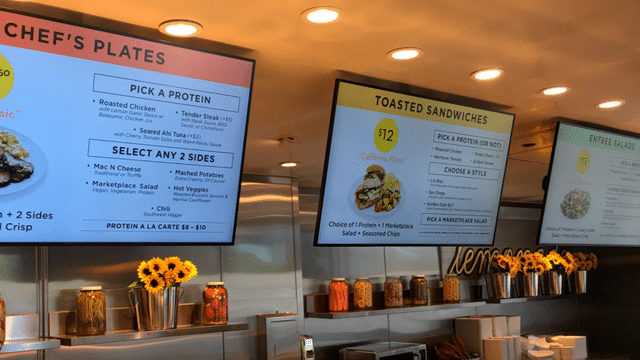
Food service staff are also creating the same level of transparency within the servery space itself. From posters explaining sustainable fishing practices to digital signs displaying the amount of food waste produced each week, there are many ways to display information that will help connect students with their food.
Over the past decade, the big players within the innovation economy, the tech community and scrappy startup ventures have almost completely redefined where, how and what it feels like to be at the office. Because of this, the field of facilities management has evolved rapidly in recent years. As working from home becomes increasingly mainstream and automation unlocks new possibilities in data collection, here are the top 6 facilities management trends in 2018 so far.
Even with the last five years, the purview and extent of ‘health and wellness’ initiatives have changed immensely. This is best encapsulated in initiatives such as the International WELL Building Institute’s (IWBI) WELL Certification program for buildings.

Spanning everything from air quality to mental health, the WELL framework is a set of guidelines that facilities can use to help improve the overall human experience within their spaces. Other features include lighting guidelines that “minimize disruption to the body’s circadian system” and developing a system that enables the facility to make adjustments based on the latest research in the health and wellness field.
Aside from new accreditations, healthy food and beverage options, as well as fitness areas, continue to be of increasing importance when it comes to catering to tenants demand. Many buildings have begun incentivizing healthy living outside of the office by instituting bike-sharing programs or hosting special events for those who bike to work.
It’s no secret that the focal point of facilities management has shifted away from the physical space: nowadays, crafting a well-rounded employee or tenant experience is of the utmost importance.
At the most basic level, a positive experience is one that is both easy and convenient. One easy example is helping visitors navigate your building by installing electronic directories and other digital signs or kiosks they can use to get directions. Similarly, you can offer conveniently placed touch screen tablets or simple mobile apps to your occupants so they can easily reserve a conference room or common space.
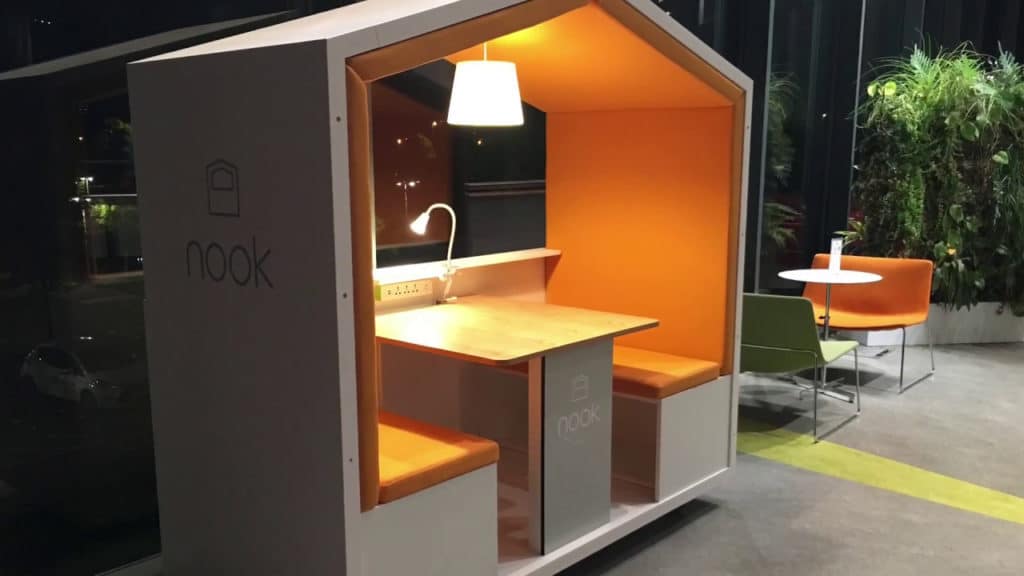
Another trending topic within the employee experience world is the creation of quiet spaces and wellness rooms within the workplace. There are now several companies out there, such as Nook, that specialize in creating sound-proof, nook-like spaces (either fixed or mobile) that are perfect for one-on-one meetings or phone calls. Similarly, wellness rooms, whether meant for general relaxation/meditation or new moms who are breastfeeding, are quickly becoming a staple. While the specific purpose or layout of these rooms may vary, generally speaking they are meant to provide temporary respite from typical workplace stressors.

Ultimately, more and more facilities are investing time and resources into making their buildings as “user-friendly as possible,” whether by including more accessible common spaces or creating smaller, niche spaces.
The importance of sustainability in the facilities management field has grown significantly over the past two decades—and shows no signs of stopping!
Many buildings are now investing in massive plant walls that act as natural indoor air purifiers. Energy efficiency is a top priority when redesigning new areas or revamping old ones, as LEED certifications have quickly become the industry standard. According to the Leadership in Energy and Environmental Design (LEED) website, more than 92,000 projects have earned an LEED certification to date.
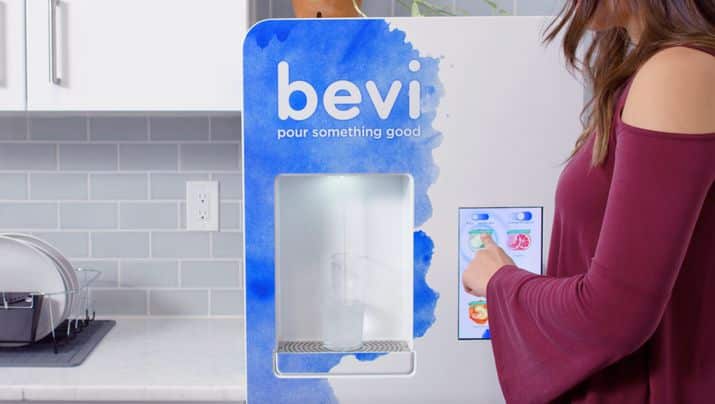
When it comes to waste management, there’s been a recent trend towards finding ways to reduce overall waste, rather than finding eco-friendly ways to (as one might say) pick up the mess. Many facilities have eliminated the hassle of overflowing recycling bins by providing flavored sparkling waters on tap with Bevi, the smart water cooler. By encouraging tenants to use their own reusable bottle or mug, facilities can make a huge dent in their monthly waste management costs.
According to a Gallup survey conducted in 2017, around 43 percent of employed Americans reported spending at least some of their time working from home. Furthermore, those who did work remotely reported spending a higher percentage of their work week doing so, as compared to those who worked remotely in 2012.
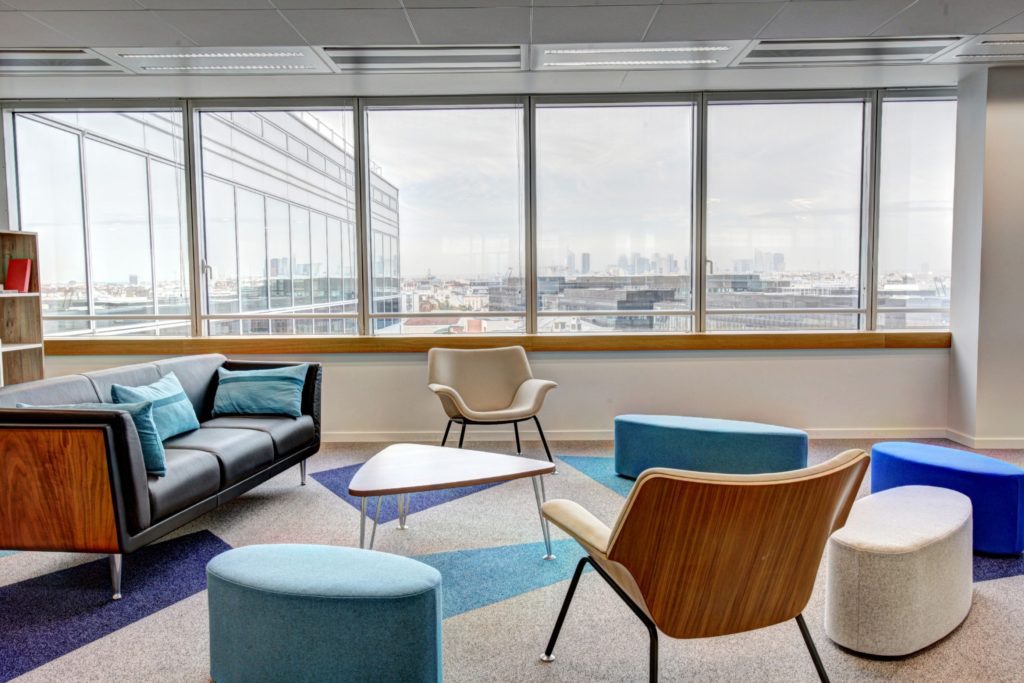
With a larger portion of people working outside of the office on a semi-regular basis, flex space—or flexible work, desk or meeting space—has become increasingly popular. There are many different manifestations of flex space, such as hot desking, where employees don’t have a permanent desk, but take any desk available. Other ideas include communal lounges or roundtables where guests, or anyone looking to change things up, can sit and work. Often times, offices with assigned seating will install standing desk flex space, especially if a good portion of the team is typically in and out of the office over the course of the day.
Just like a co-working space, flex office space allows for chance encounters, laid-back collaboration, and a bit of friendly chatter that could lead to innovative project ideas or bonding between teams that don’t typically work together.
The benefits of automation are two-fold: it saves you time and your team money. Rather than relying on tenants or team members to monitor temperature levels or switch off the lights, centralized Building Automation Systems (BAS) can help automatically monitor, and optimize, both at the same time. Furthermore, these systems collect data automatically, giving your facilities management team the ability to analyze trends and develop strategies for saving money and boosting energy efficiency.

Similarly, there are now several work order softwares available that are designed to help maintenance departments track requests, collect data, schedule maintenance visits, and provide the best overall tenant experience possible. Most of these systems also provide simple mobile apps that tenants can use to quickly and conveniently submit a request or report an issue.
From water coolers that restock themselves to comprehensive BAS, the “smart” facility is quickly becoming the industry standard.
Gone are the days where security guards and cameras are the only firewall a facility needs. Nowadays, cyber attacks, data leaks, and hacking attempts are top-of-mind for most companies searching for a new space. Whether it’s a small startup or a global corporation, the quality and reliability of the wireless security in your building can be make or break: even if the physical space is perfect, companies will not sign a lease if the appropriate cyber security protocols are not in place.

No matter the type of tenants your facility is trying to attract, adding a security expert, or a team of experts, to your staff is a prudent, long-term investment. If your team is not ready to take on someone full time, there are many contract IT services that can help assess—and improve—the efficiency of your IT infrastructure and firewall.
What have you implemented in response to these recent facilities management trends? Let us know in the comments below!
With a few simple product swaps and some greener habits, your office will be on its way to earning some serious eco-friendly bragging rights.
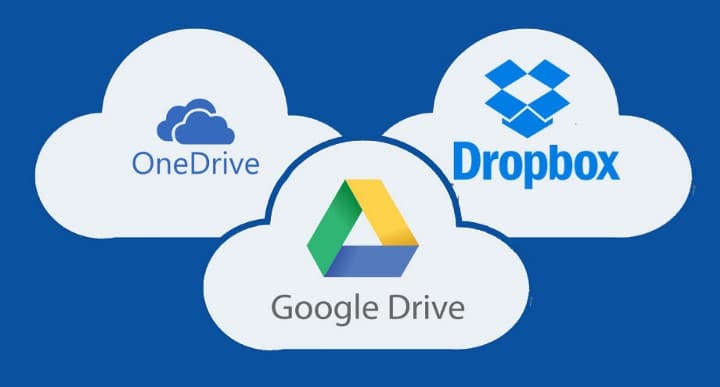
This tip almost seems trivial given the digital age we now live in. From cloud storage services to digital pay stubs, the need for paper and printers in the workplace has rapidly decreased in the past two decades.
Diminish the temptation to print by reducing the number of printers in your office and donating them to a local school or non-profit organization in need.
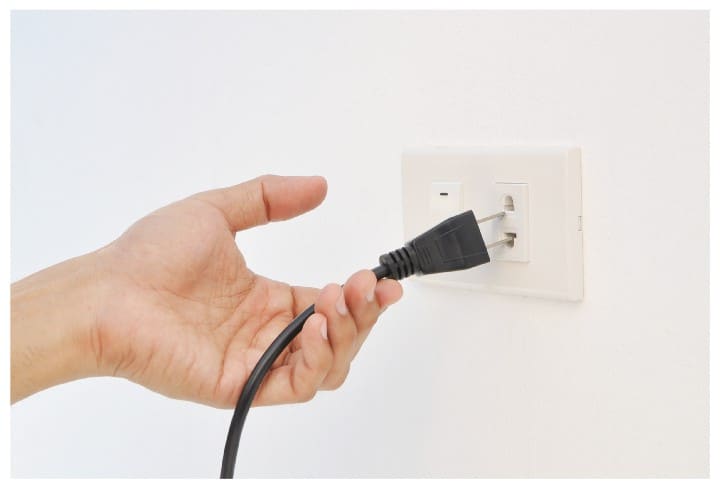
Ever feel like there’s a ghoulish spirit haunting your office after hours? It might just be phantom power.
It’s not enough to simply power down your devices before leaving — power is still being consumed if it’s plugged in. Phantom power, or standby power, can become a huge, unnecessary expense for your company if left unaddressed.
Don’t let phantom power haunt you — remember to unplug your workstation before leaving the office.
Improve energy efficiency immensely by installing or swapping in motion-activated light switches. These are a particularly great solution for conference rooms since they are often separated from the central office space and are less frequently used.
Rather than relying on employees to switch off the lights as they leave or enter, motion-activated lights are human-proof: they save energy automatically.

Rescue your office’s beverage budget from the recycling bin.
Get Bevi. This smart water cooler will help you significantly reduce — if not eliminate — the need for plastic bottles and cans in your office. Say goodbye to overflowing recycling bins, and hello to eco-friendly, healthy hydration!
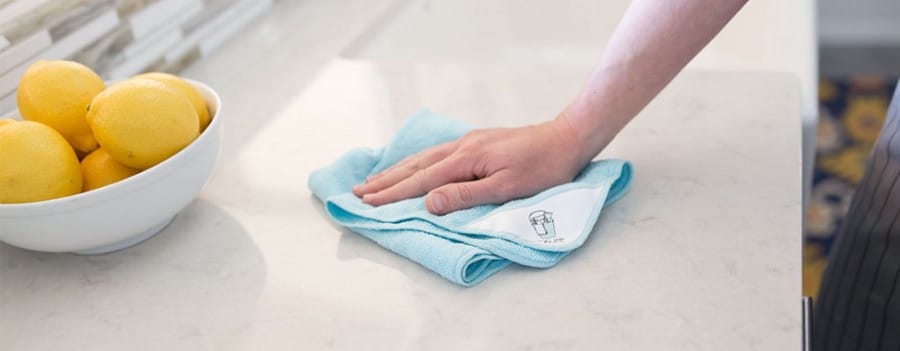
In most offices, paper towels are the go-to method for cleaning up spills of any kind. There are, however, many inexpensive, eco-friendly alternatives.
Get yourself a stack of microfiber cleaning cloths and attack that chili spill with some eco-minded enthusiasm!

To some, single-serving packets of sugar, cream, salt, or pepper may seem fancier and more convenient than buying an entire container.
In reality, buying these items in bulk saves money and eliminates unnecessary waste — not to mention that they’re generally easier to find in the store. It also will prevent employees from wasting the product itself — rather than using one and a half creams packets, employees can pour out the exact amount they desire from the carton of cream.
That said, we don’t recommend you keep a messy paper bag of sugar on your kitchen countertop. Instead, find a reusable glass jar, fill it with sugar and a small spoon, and put it next to the office coffee pot.
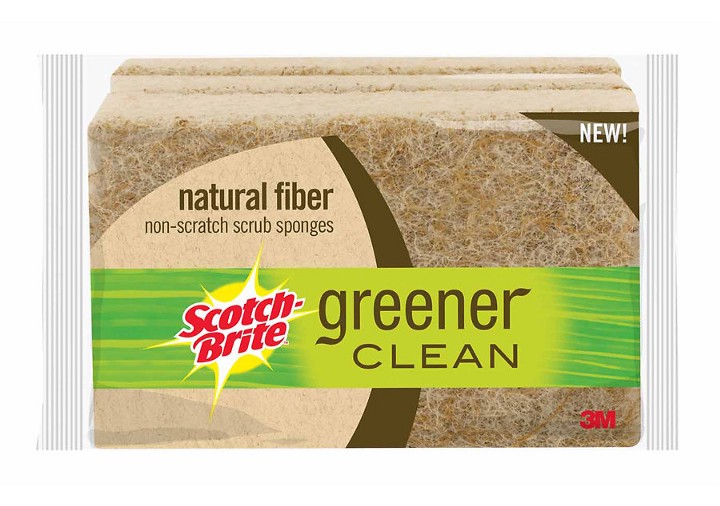
Although small and mundane, sponges pose many environmental and health risks. The majority of sponges are made from oil-based plastics that can take up to 52,000 years to decompose in the landfill. Furthermore, when left wet, sponges become a breeding ground for harmful bacteria, including E. coli and Salmonella.
Here’s the good news: sponges made from 100% plant-based fibers can prevent eco-guilt and the risk of bacterial growth. Made from bio-degradable materials, these sponges will break down easily in the landfill and naturally resist unwanted bacteria.
Here at Bevi HQ, we have the Scotch Brite Greener Clean sponges pictured above — they work just as well, if not better, than their fluorescent peers.

Switch to Castile soap and reinvest your cleaning budget in something your employees actually want — like yummy snacks.
At just $12 for a 32oz bottle, Castile soap will single-handedly replace all your other kitchen cleaners. From dishwater detergent to dish soap, all-purpose kitchen cleaner to laundry detergent, Castile soap is a one-stop-shop for a clean, eco-friendly office kitchen.

While reusable ceramic plates are ideal, most offices don’t have the budget to buy plates for the entire office.
Luckily, there are plenty of affordable compostable (or recyclable) options available that come in a variety of sizes. Whether you’re celebrating birthdays or promotions, keep the environment in mind when buying one-time-use products.
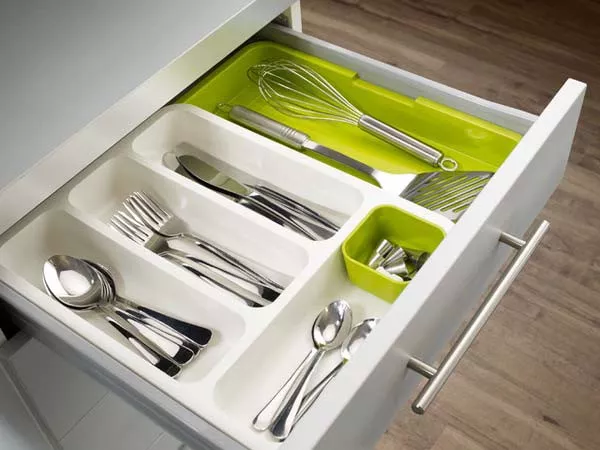
Similarly, reusable silverware is a relatively inexpensive and easy way to cut down on plastic and paper waste during catered company lunches.
In addition to the usual forks, knives, and spoons, it’s also helpful to have a set of reusable serving utensils on hand, rather than relying on the disposable utensils provided by the catering company.
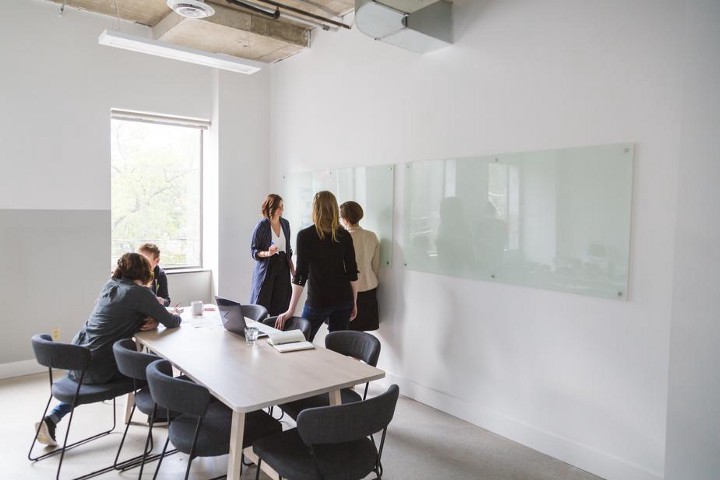
If your office space is equipped with windows, this is really a no-brainer.
About 25% of the electricity consumed in the US is used to light office spaces. Cut your environment and financial losses by opening the blinds and letting the natural daylight pour into your workplace.

While most people know recycling is a good thing, many folks are still confused as to what can, and can’t, go into the recycling bin.
Help your employees become veritable eco-warriors by clearly labeling which type of waste goes where. It’s also helpful to send out a quick refresher email or video every now and then so that employees — new and old — stay mindful.
In addition, if your facility does not offer composting as part of its waste management service, do some research to find a third party composting service in your area. For example, at Bevi HQ in Boston, we use this awesome service called Bootstrap Compost!
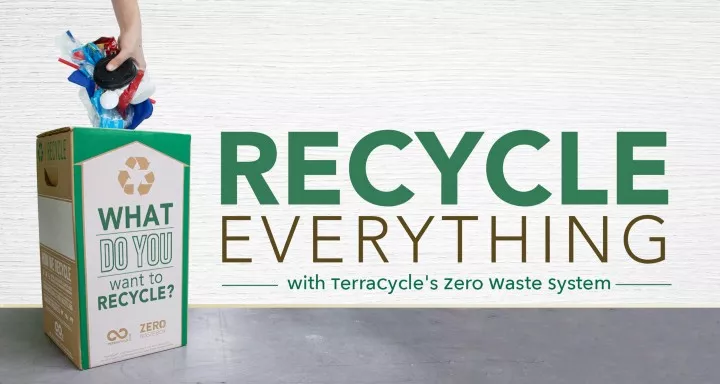
TerraCycle is every snack-loving, eco-minded employee’s dream.
Instead of sending your snack and candy wrappers to the landfill, get a TerraCycle box and go zero-waste. Although these boxes are on the pricier side, they’re an extremely worthwhile investment for offices that produce an unmanageable amount of plastic waste in the form of pens, plastic gloves, plastic K-cups, or snack wrappers.
Check out TerraCycle’s offerings to see which Zero Waste System will work best in your office.
While most devices these days optimize CPU speed and battery life on their own, enabling power-saving mode or sleep mode can help further preserve battery life and reduce power consumption when these devices are not in use.
Go to your computer’s System Preferences (Control Panel on Windows) or your mobile devices’ Settings for more information about how you can conserve power and increase battery life.

Even in the warmer, summer months, it’s fairly common to see office-dwellers wearing sweatshirts and jackets.
Instead of keeping the office as cold as the company fridge, try starting your air conditioning system at 72 degrees. If your workplace is still comfortable at this level, try going up another degree or two.
The higher your thermostat reads in the summer months, the more energy — and money — you’ll save in the long run.
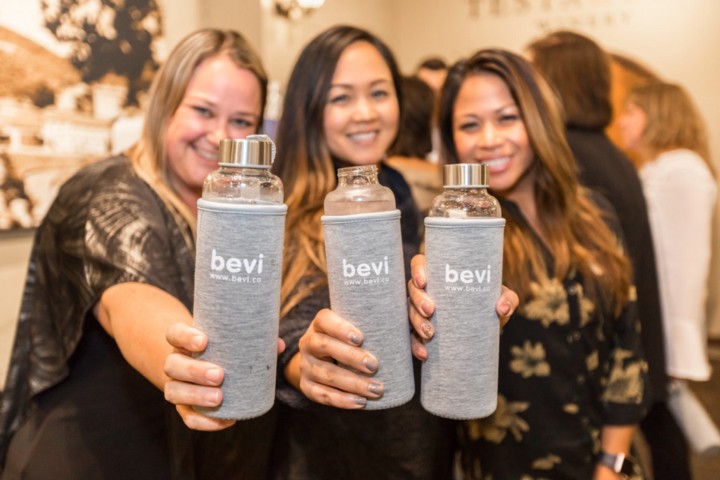
Bringing your own bottle, tumbler, or coffee mug to work is one of the easiest and healthiest eco-initiatives to institute in the office.
As Dr. Tom Ronay mentioned in this interview on workplace hydration, “in our office, each person has their favorite mug, cup or glass. These personalized mugs or special glasses are fun and almost a form of personal expression.” In short, a BYORB policy encourages your employees to express themselves and stay hydrated at the same time.
BYORB will not only reduce the plastic waste in your office but will also boost productivity and encourage employees to swap out sugary canned drinks for something more hydrating.
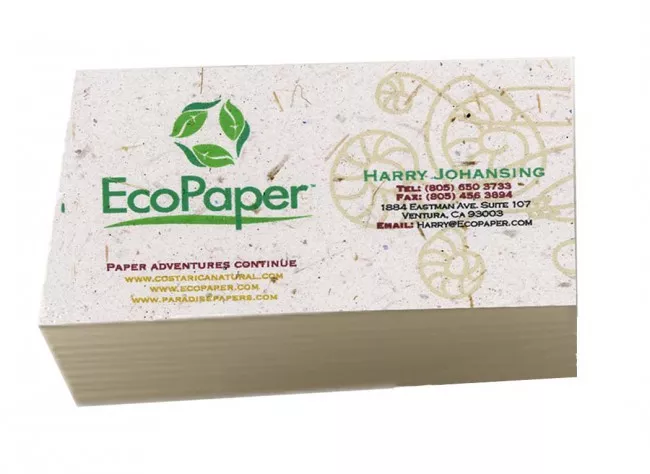
Although LinkedIn and social media have more or less eliminated the need for business cards, they’re still very useful tools for those who work in Sales and Marketing.
When digital business cards just won’t cut it, opt for an eco-friendly business card printer. Aside from printing on recycled paper, some printers even offer plantable cards made from seed paper. Find out more here!

Whether you’re moving offices or have occupied the same space for a decade, a bike rack is a relatively easy, one-time investment that can have a huge impact on how your employees commute to work.
It will not only encourage your employees to be more active but also get folks to reconsider the environmental impact of driving into work each morning.
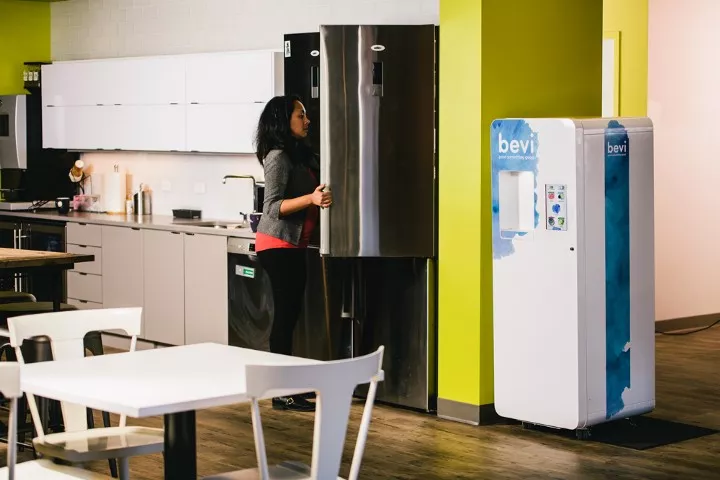
Although it may seem like an insurmountable task, defrosting and cleaning the fridge will help to increase its lifespan and efficiency.
Here’s why: each time your employees open the fridge door, moisture is let inside. This moisture eventually builds up around the coils inside the fridge, causing frost to form. Since frosty coils lead to restricted airflow, it’s going to take more and more energy to keep the fridge at the same temperature.
Long story short, by regularly defrosting and cleaning the office fridge, you’ll save both money and energy in the long run.

If your company does not have an explicitly eco-friendly mission, it’s likely up to individual employees to encourage sustainable purchasing and system implementation in the office.
As the saying goes, there’s strength in numbers! Round up your eco-minded co-workers and set up a sustainability task force. Together you can brainstorm creative ways to propose your ideas to the office decision-makers, as well as put systems in place to measure and monitor how the initiatives are impacting your office.
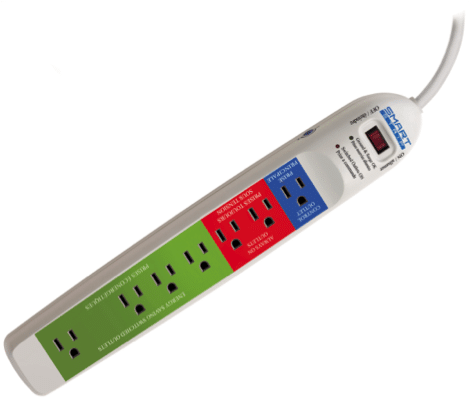
These smart power strips were specifically designed to help you waste less power.
As previously mentioned, devices that are off but plugged into an outlet still draw power; this phenomenon is called phantom or standby power.
Rather than relying on humans to unplug all their gadgets, this smart power strip does the work for them by shutting off the power to products that are in standby mode.
Basically, you can set it, forget it, and save money.

Believe it or not, fixing a leaky faucet or toilet could save you up to 10% on your monthly water bill.
If you think bringing in a plumber is more trouble than it’s worth, consider this: a faucet that leaks about one drip per second can waste more than 3,000 gallons of clean water per year. Yup, it’s time to make that call.
And while you’re waiting, keep a bucket, pan, or some sort of container underneath the leaky faucet and use the excess to water the office’s plants.

The benefits of office plants are numerous. In addition to their aesthetic value, plants can help reduce your office’s carbon emissions as well as naturally purify the air in your office.
Some plants are better at this than others; we recommend Spider Plants, Peace Lilies, English Ivy or Bamboo Palms.

Aside from its positive environmental impact, carpooling or ride-sharing is a great opportunity for employee-bonding. One way to get people thinking about carpooling is to introduce new employees to company members that live in a nearby neighborhood.
During the summer months, try hosting a weeklong bike/walk challenge in which the team with the most people who bike or walk into the office gets a special catered lunch. You’ll be amazed at how well a little bit of friendly competition gets people motivated to make a change!
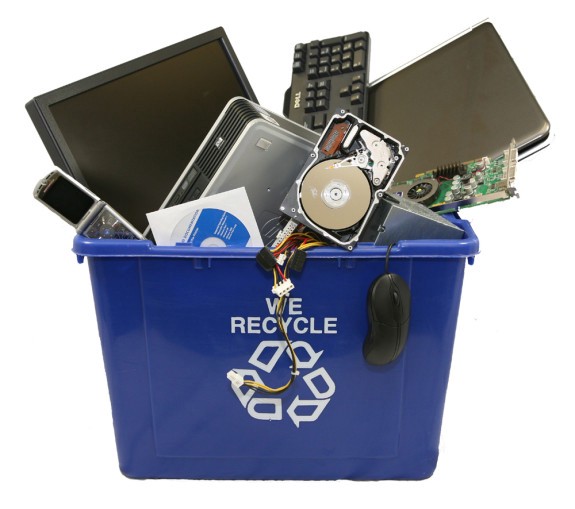
Earth Day is the perfect occasion to do some spring cleaning, sustainability style!
Remove unnecessary clutter from your office by recycling or donating old electronics. Most electronics are made from valuable resources and materials — such as plastic, glass, and metals — that require a significant amount of energy to mine, process, and manufacture. Do your part to conserve natural resources and reduce air/water pollution by recycling that old keyboard that’s been in your desk drawer for 2 years.
While it may not be feasible at some companies or in some roles, working remotely is a viable way to reduce your employees’ collective footprint. It will not only reduce carbon emissions (i.e. one less car commuting to work), but it can also help reduce food and plastic waste, as employees can prepare their lunch right in their home kitchen.
So stay home and work in your pajamas — the environment will thank you!

Having a small stack of office Tupperware is one of the easiest ways to reduce food waste in your office. Rather than throwing away the leftovers from the company-wide catered lunch, save them in Tupperware and toss them into the company fridge. Trust us, they will get eaten!

Everyone talks about switching to LED bulbs, but what actually makes them a better, eco-friendly alternative?
Compared to traditional incandescent or compact fluorescent bulbs, LED bulbs use 75% less energy and can last more than three times as long.
This will ultimately help you to cut costs (by reducing the number of bulb replacements you buy in a year) and reduce your carbon footprint since LED bulbs are non-toxic and recyclable.
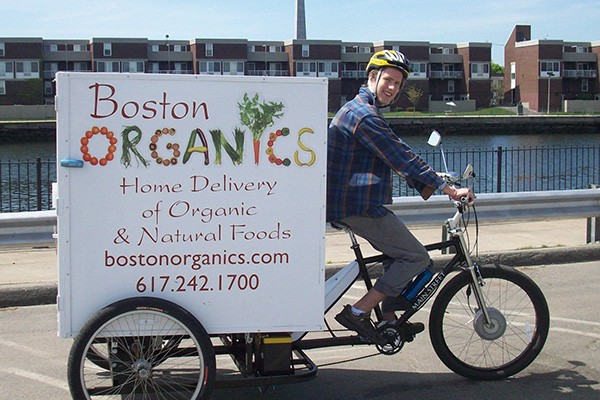
Here at Bevi HQ, we get a monthly box of fruits — and other healthy snacks — from a local organic food delivery company, Boston Organics. In addition to the fact that all the food is locally-sourced, we love how Boston Organics reuses their cardboard delivery boxes.
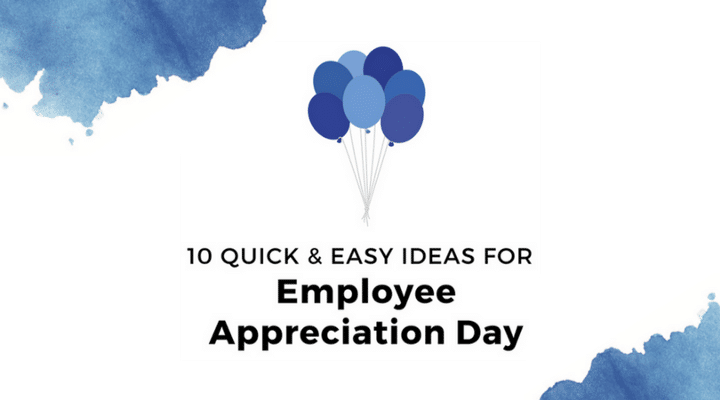
When it comes to going green, changing human behavior is the biggest obstacle. You can add compost bins and micro-fiber cloths to your office, but these changes are only successful when employees buy into the idea and follow the new, eco-friendly systems correctly.
If you’re serious about going green in the office, be sure to include employee incentive and appreciation programs in your sustainability road map. For some employee appreciation inspiration, check out these 10 quick and easy ideas to show your employees your gratitude.
Happy Earth Day!
Often times, the Office Manager is on the front lines of a continuous battle between those employees who value convenience and those who prioritize environmental impact. From balancing the office’s budget to fielding all types of employee complaints, the Office Manager is almost always stuck between a rock and a hard place.
As with any daunting task, it’s best to start small. And implementing a Bring Your Own Reusable Bottle initiative is a great place to start.
Rather than stocking and restocking sky-scrapers of plastic cups in your kitchen, reduce your plastic waste exponentially by encouraging employees to take their favorite canteen into work with them. This BYOB approach will not only save the Office Manager time, but save money — money that can be reinvested in something everyone in the office will love, like fruit or snacks!
Don’t left the office kitchen battles continue: check out these 5 tactful ways to get everyone on board — and even excited about — the new BYOB initiative.

Remember: there’s strength in numbers.
Whether you’re an Office Manager or an environmentally-conscious employee, it’s best to have a team of people behind you when proposing a new and drastic change to life at the office.
Don’t face the rebuttals and complaints alone. Gather a squad, inform them of the change and its rationale, and let the company know that there’s a whole group of excited employees ready to answer any questions that may come up.
Especially at larger companies, where it’s unlikely everyone knows each other on a first name basis, try to involve a few people from each department in your sustainability task force. Employees are more likely to trust and support the people they work with everyday than a faceless email announcement from someone they’ve never met.
Before kicking-off your BYOB program, be sure to form a squad of people who can help hype up its positive, environmental impact, as well as field any comments or concerns different departments may have.
Is this your recycling bin? Looks like it’s time to get Bevi.
For some offices, getting rid of plastic cups might be as simple as never buying them again. In other offices, however, the transition might not be as smooth. If you’re worried about an impromptu employee mutiny, there are several ways to ease your office into a more zero-waste approach to water cooler talk.
After launching your BYOB program, try leaving only a small stack of plastic cups in plain sight. Chances are, many folks won’t go looking — or won’t know where to look — when the stack disappears. This will help to incentivize people to bring in their bottles, since having to find and restock the plastic cups is more effort than carrying your own bottle. You might get some annoyed comments about the lack of cups over Slack, but stay strong! Tell these folks where they can find more cups, but don’t restock them yourself.
If your office isn’t equipped with reusable glassware, keeping an emergency pack of single-use cups on hand is kind of a must — especially if you frequently have visitors. In this case, stash the solo cups away in a secret cabinet or drawer, and reveal them only when you’re expecting guests.
In general, if the BYOB initiative is more controversial than you planned, relieve separation anxiety by making the transition from plastic cups as gradual and reasonable as possible.

If you’ve got the budget, this is a no brainer.
What better way to launch your BYOB initiative than to purchase a personalized or company-branded (or both!) reusable bottle for each of your employees.
Many companies that are both getting a Bevi and moving into a completely new office space like to include reusable bottles as part of a ‘Welcome to Your New Office’ gift for each employee. Broadly speaking, moving into a new space is the perfect occasion to put new, eco-friendly systems in place!
While not every office has the funds to purchase bottles for everyone, there are many work-arounds. Water proof stickers are a simple and affordable way to get employees hyped about showing off their newly decorated reusable bottle around the office. Have your designers create a whole series of stickers to pick and choose from, or get everyone a decal of their name. Another solution is to work with your team to select and design a bottle that people can order on their own if they so choose — this works well in offices in which most people already have a favorite bottle, and may not need the company topurchase one for them.
Once your custom bottles arrive, encourage folks to leave them at work. With shiny, new reusable bottles on their desks, the die-hard plastic cup users will surely become BYOB champions.
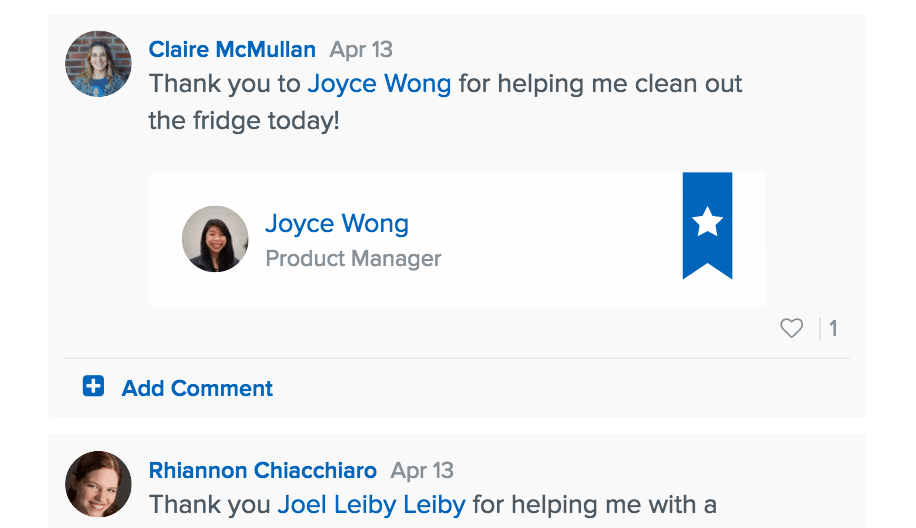
At Bevi, we love giving shoutouts over Slack or in our HR portal, Namely.
Ever heard of intermittent reinforcement conditioning? If you haven’t, all you need to know is this: it works! As foreign as this term may sound, chances are it’s something you’re already doing in the office. Each time you randomly give a shoutout to an employee over Slack, you are using the power of intermittent conditioning to motivate and reinforce positive behaviors!
The true beauty of intermittent conditioning lies in the fact that you only have to reward behaviors occasionally in order to reinforce them. In knowing that they might get recognition for their positive behavior, employees will start to make good habits part of their normal routine, whether it’s helping to clean out the fridge or bringing their reusable bottle into work.
Don’t take this the wrong way: we’re not suggesting you treat your co-workers like Pavlov’s dogs!
All we’re saying is that highlighting or rewarding someone who has brought their reusable bottle into work is a really great way to motivate that individual — and others — to keep your BYOB initiative going strong.

A toast, to all those who use a reusable bottle. Cheers!
Similar to Green Strategy #4, keep your BYOB program top-of-mind by frequently sharing how it has positively impacted your office and beyond.
In addition to a company-wide email or appreciation post, go big and briefly share results in the next All Hands meeting. If eliminating plastic cups has saved you enough money to buy more snacks for your office, put a sign on the fridge or water cooler explaining how the new treats are the fruits of your office’s collective labor!
For companies that have an explicitly environmental mission, your newly instated BYOB initiative could be a great occasion to brag about your company’s awesomeness on social media. Some companies might even opt to highlight an eco-warrior of the month; in other words, give a shoutout to an employee that has gone above and beyond when it comes to keeping things green at work.
Whether you’re a small startup or an international corporation, a Bring Your Own Reusable Bottle initiative is a simple and effective way to reduce your office’s footprint.